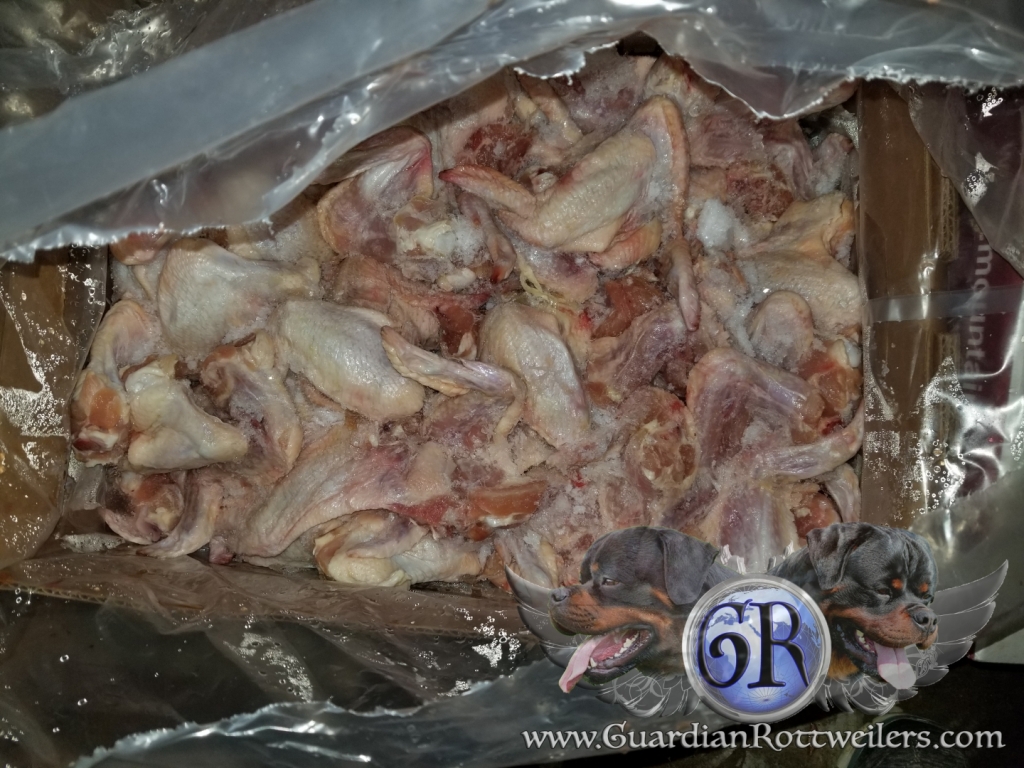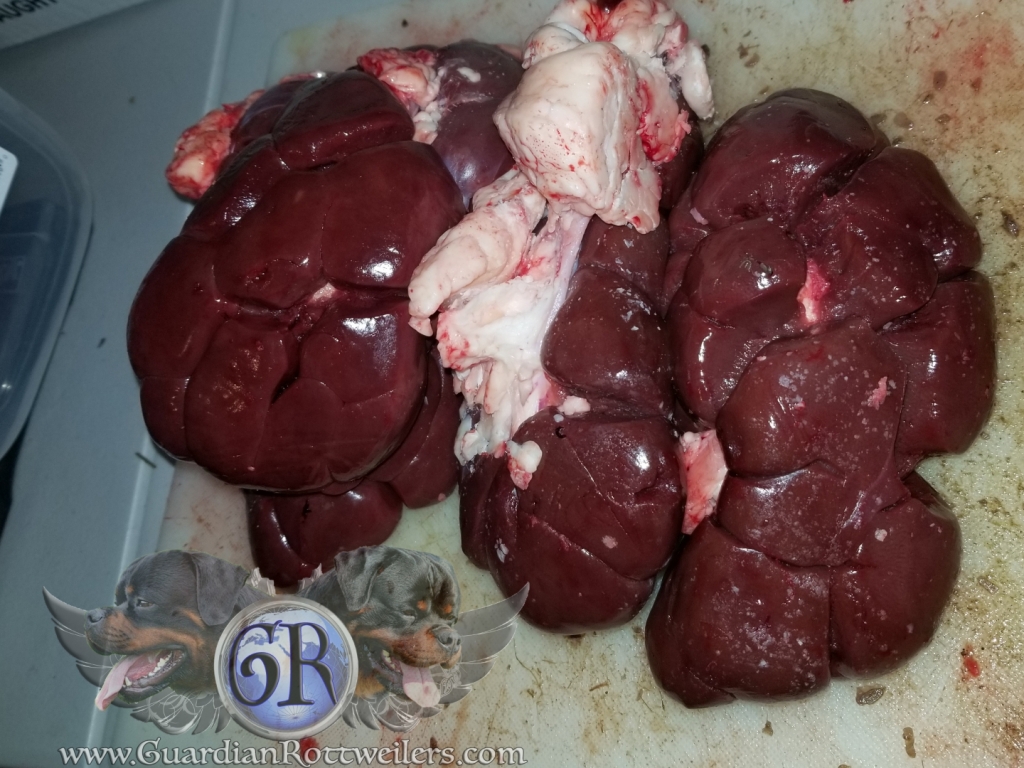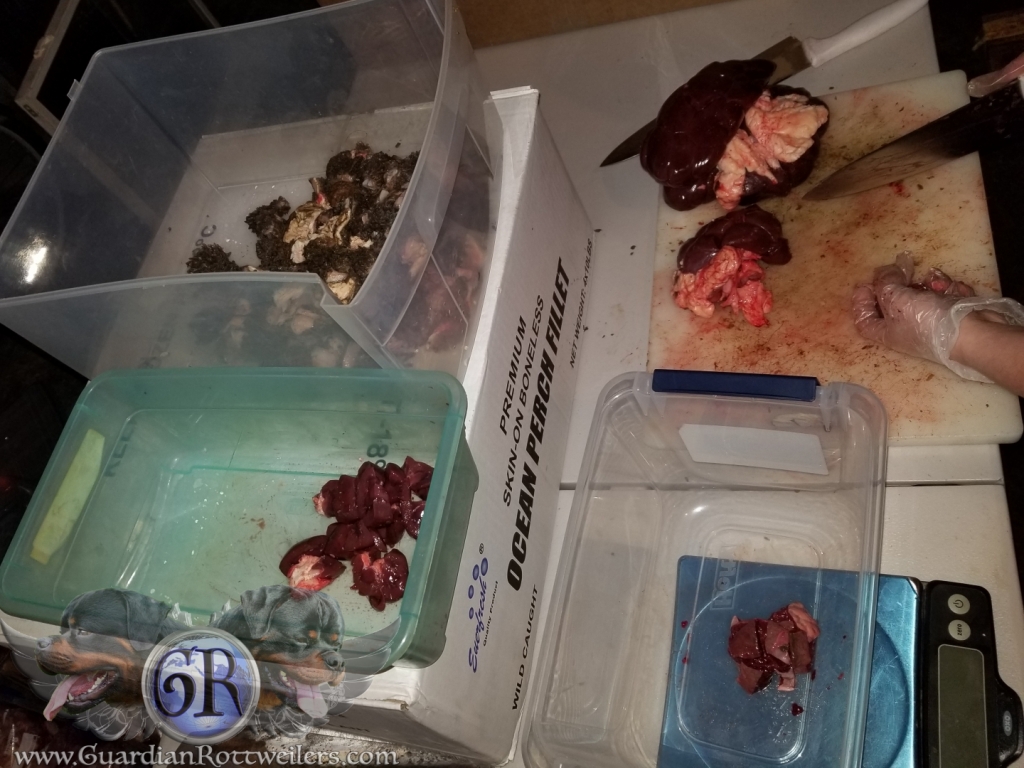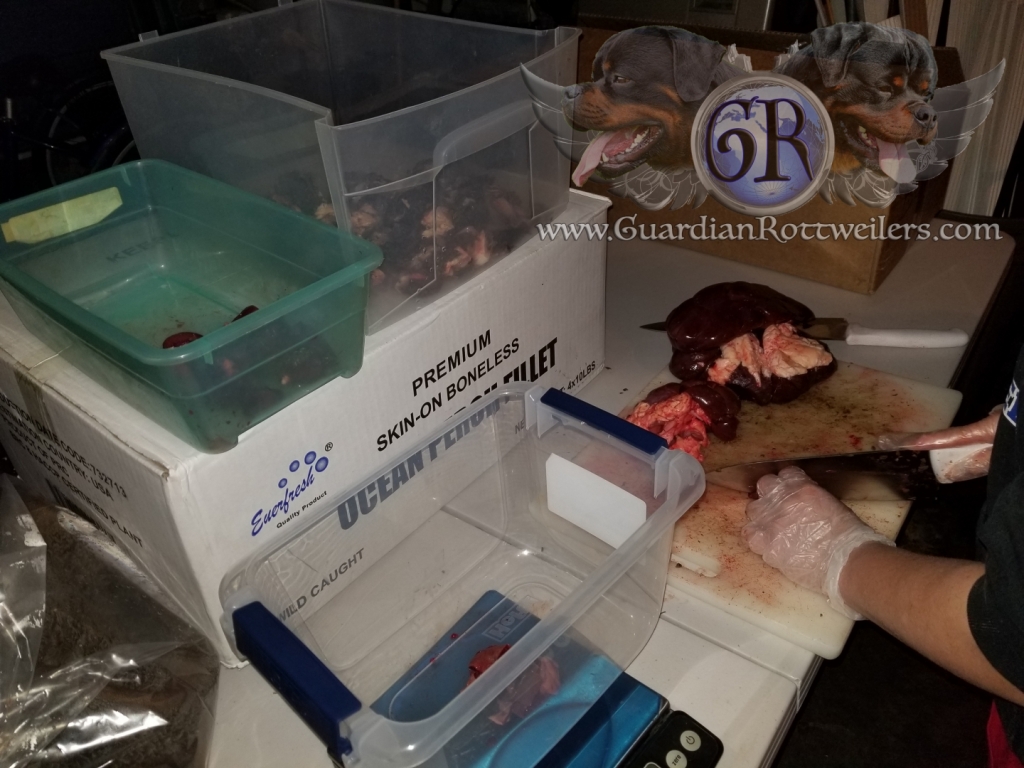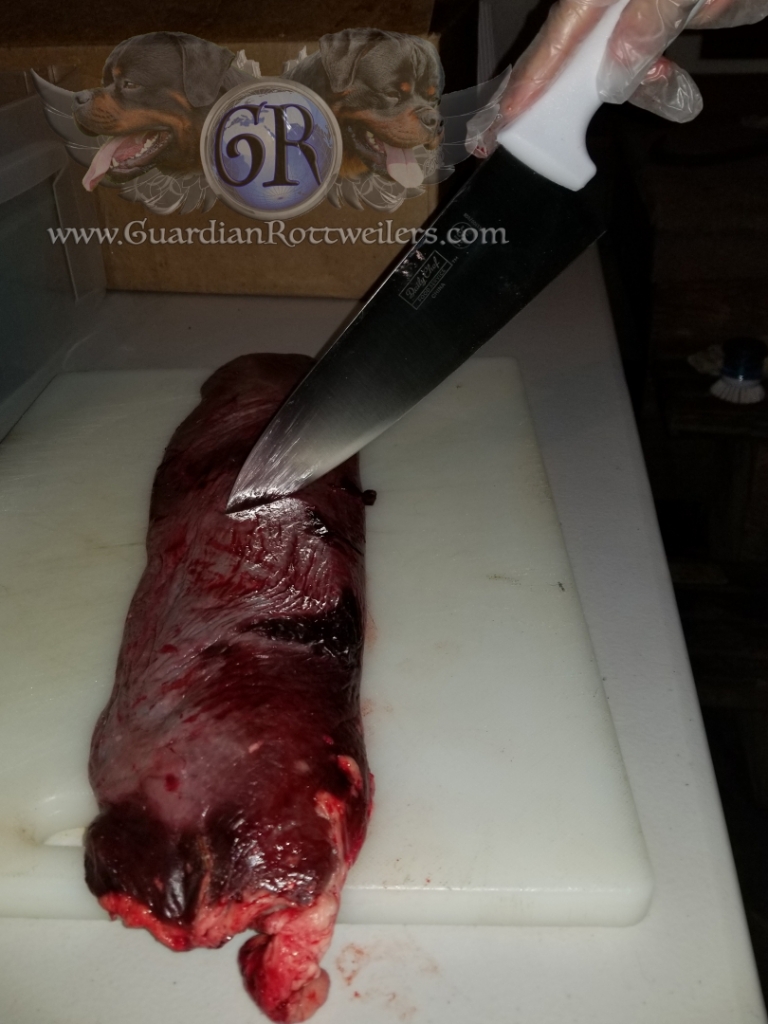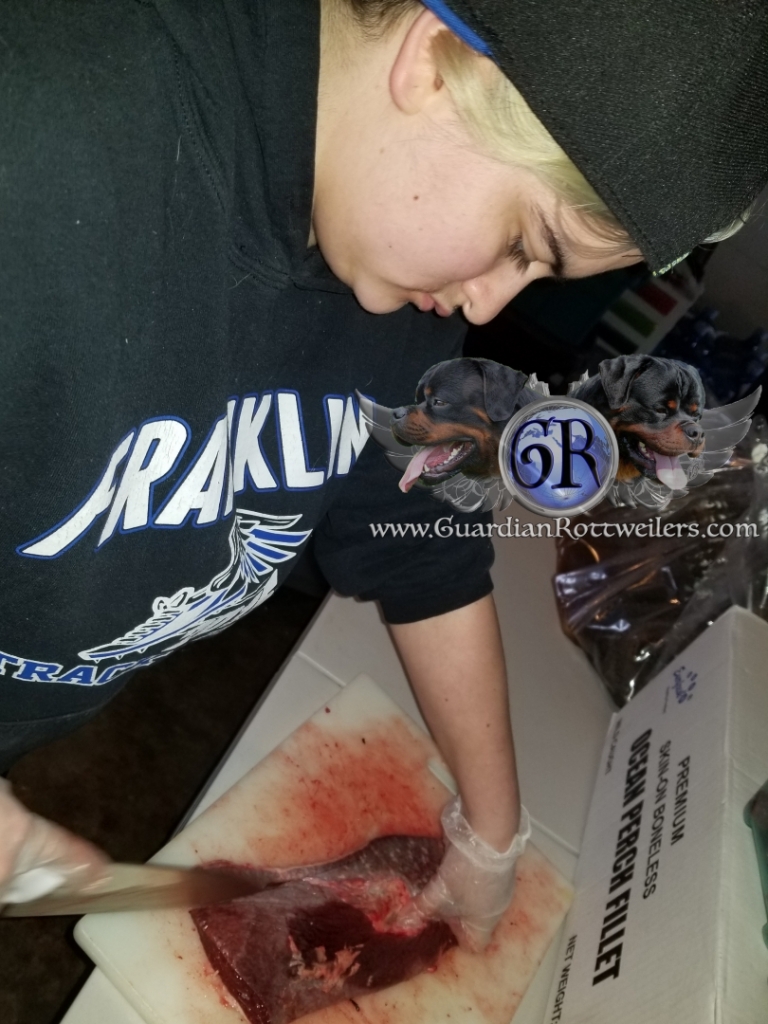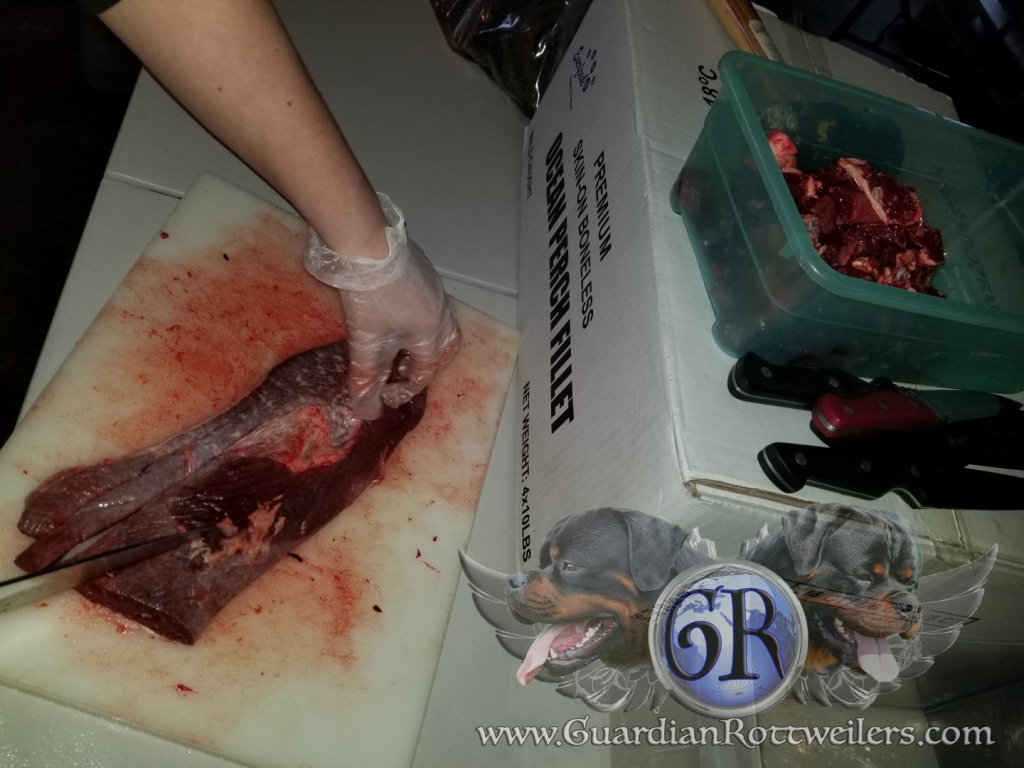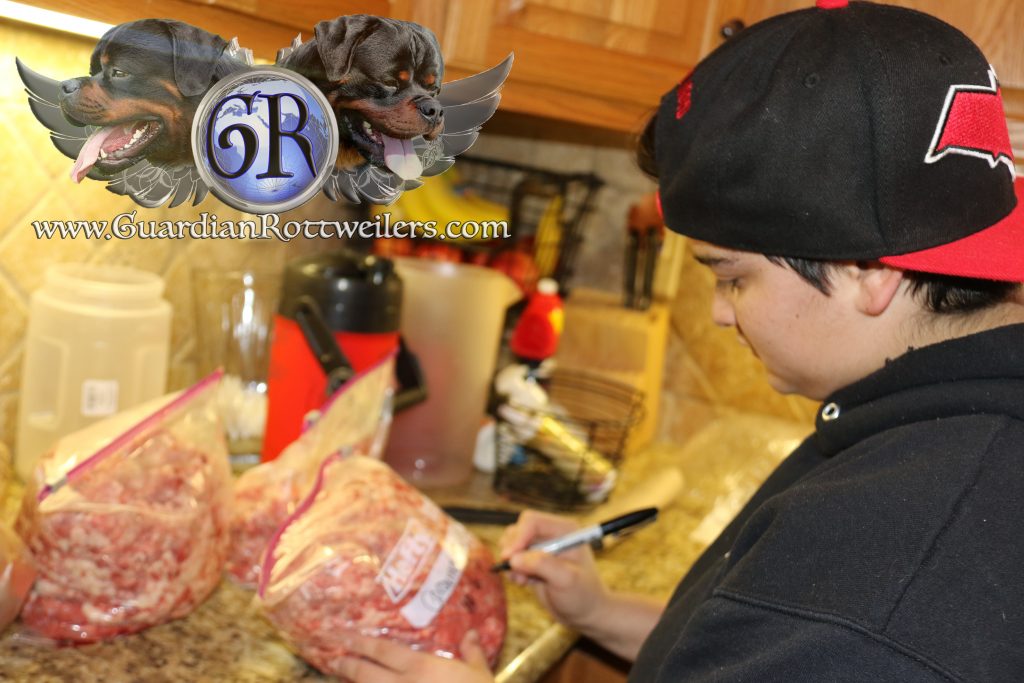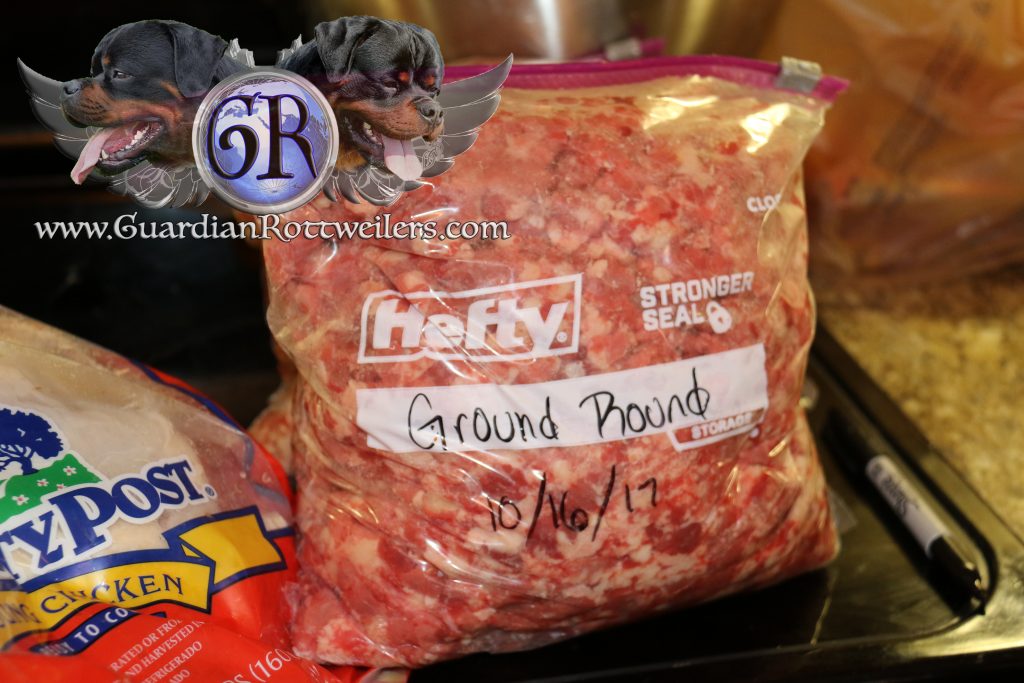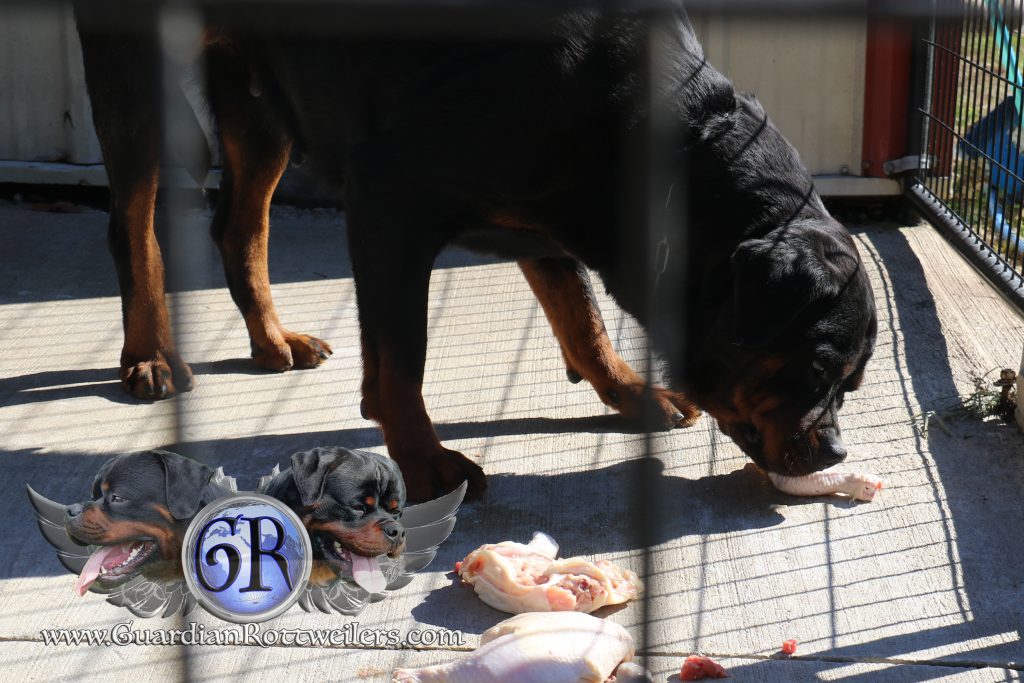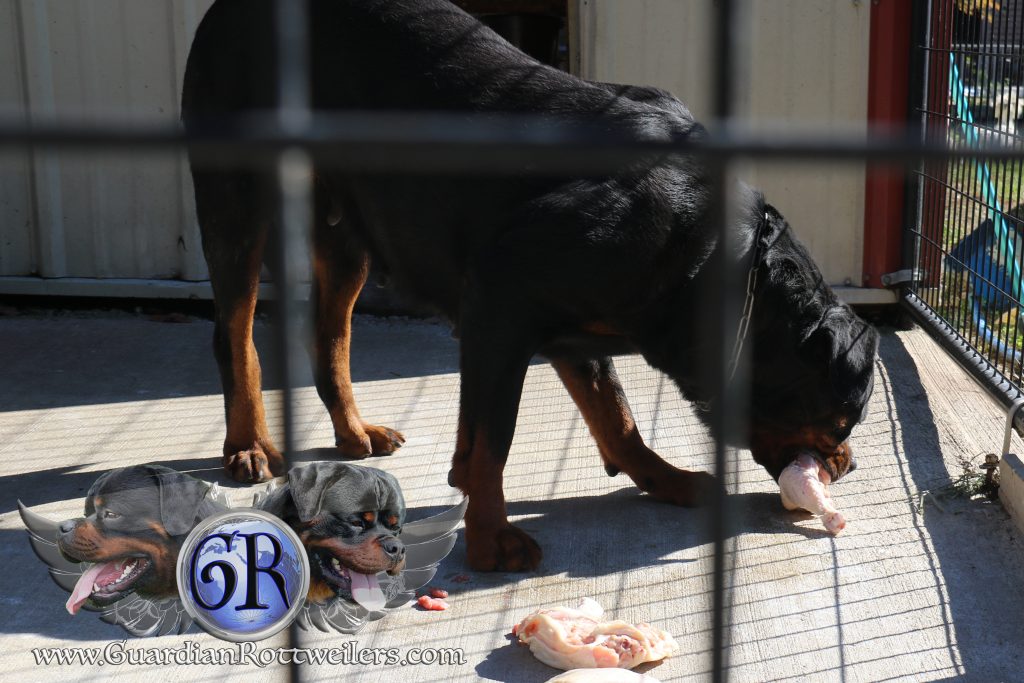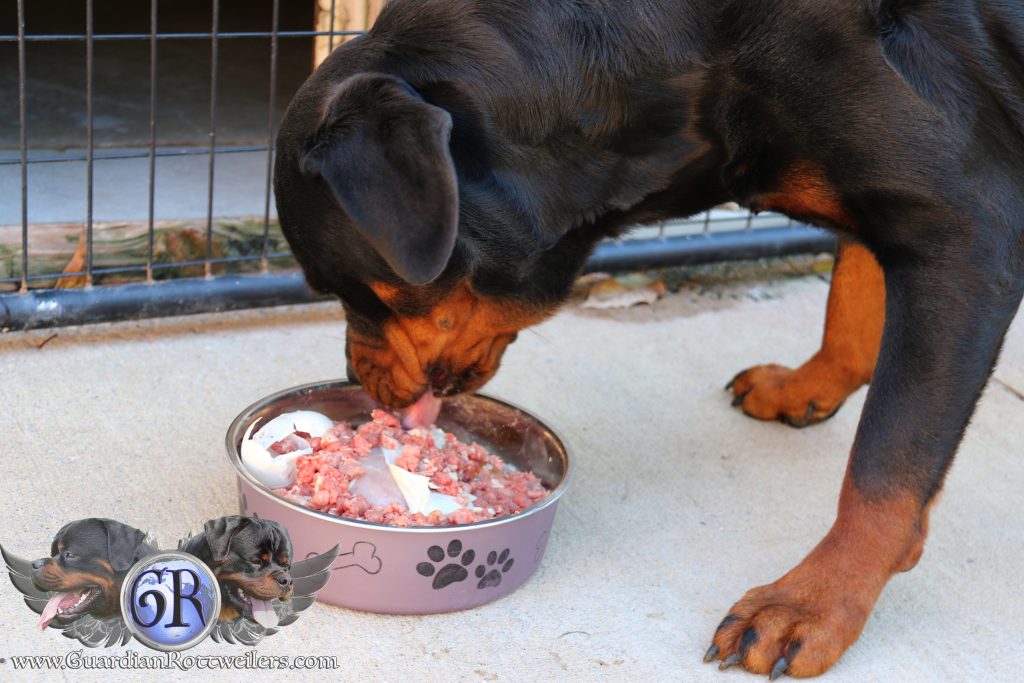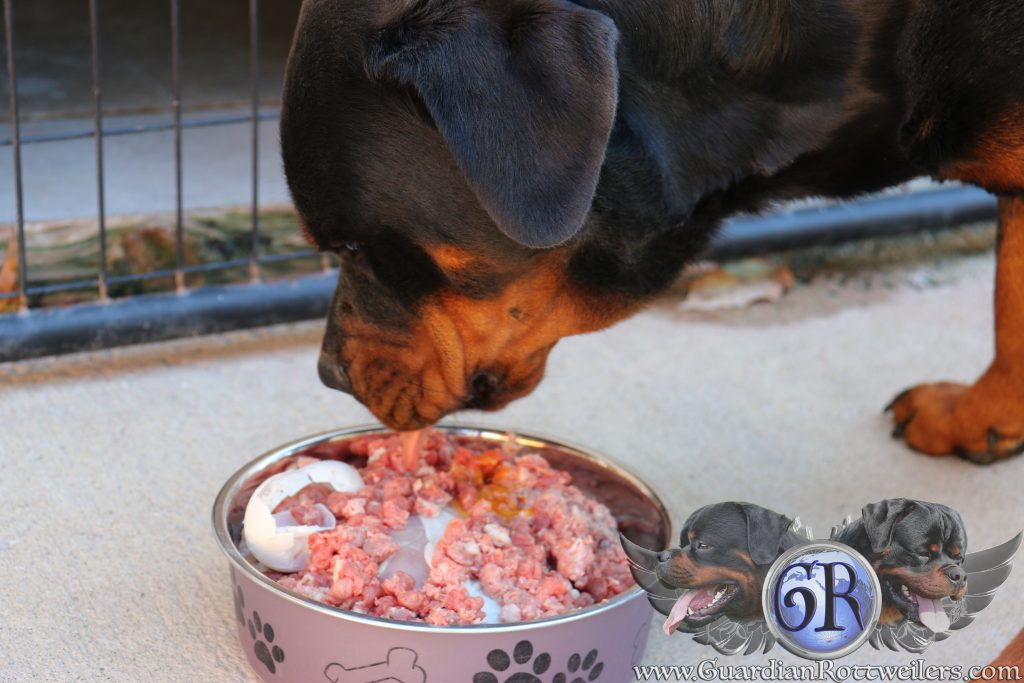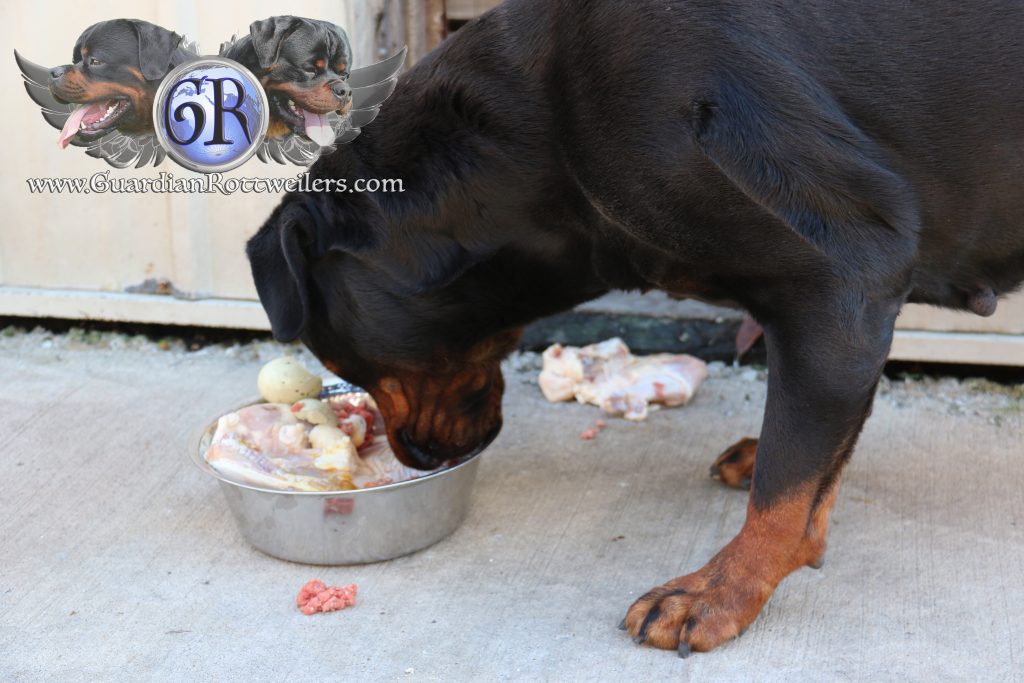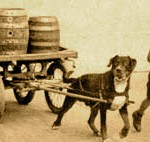Raw Feeding- Puppies, Kittens and Big Babies- Learning as we go
We took a stab (see what I did there? 😛 ) at raw feeding about a decade ago, but we just did not have enough heart in it (sorry, can’t help myself! lol) Quite frankly, I just felt too lacking in knowledge to do right by my babies. I was terrified that I would not get it right, and nothing is more important to me than the health and well being of my Rotties save my own children. After more than 2 decades of floundering (yup, did it again 😛 ) around a bunch of different foods and not being completely satisfied with any of them, and disappointed more often than not, we decided to take the plunge again. We switched all of our carnivores cold turkey (ok, that one was just ‘pun’ishable! lol That’s what happens when you are surrounded by kids all day!) and have not looked back. Only been on raw a couple of weeks, so I am by absolutely no means anywhere near an expert or even novice at it yet, but thus far, I cannot tell you how much I love it! I will try to post some updated information as we learn.
There are a few different types of raw feeding- some that include fruit and veggies, some that don’t. The one we went with is called prey-model and it is essentially 100% meat or meat products (eggs, etc.). We feed approximately 5% liver, 5% other secreting organs- kidney, spleen, brain, pancreas, etc., green tripe (fresh cow stomach), and about 10% bone with the balance muscle meat. I say approximately because we strive for balance over time- today might be fish day, tomorrow whole rabbits, etc. The key is variety- there needs to be at least 5 different meat sources a week. We also adjust the organ and bone content based on the dog’s stool. If it is too dry or chalky, then too much bone; if it is too loose, then more than likely, too much organ. We include loads of fresh eggs, courtesy of our flock- they get guinea eggs, peafowl eggs, turkey eggs, duck eggs and chicken eggs- all freshly laid. We are still learning as we go, and I still do not, by any means, consider myself an expert, however, I do love how the dogs look and act on raw and I LOVE how everything “comes out”– a fraction of the waste (poop). There is still loads of controversy surrounding raw, so again, I want to stress that nothing on my website should take the place of veterinary medicine or what is best for your individual pet. I offer what we do as information only and encourage everyone to do their own independent research.
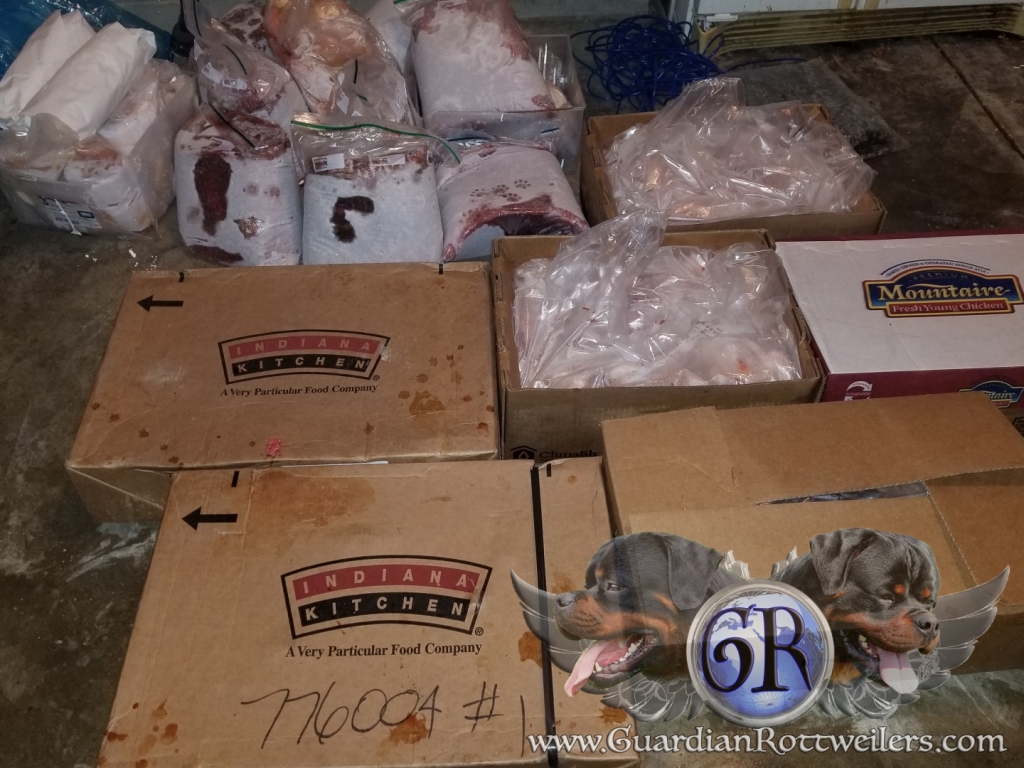
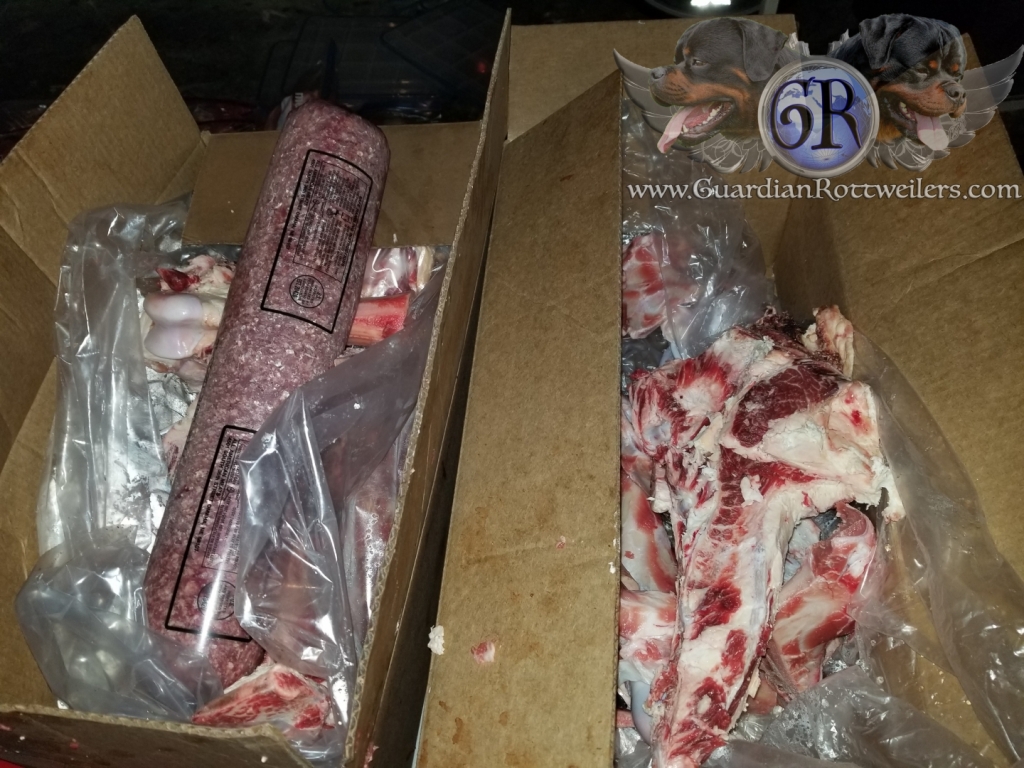
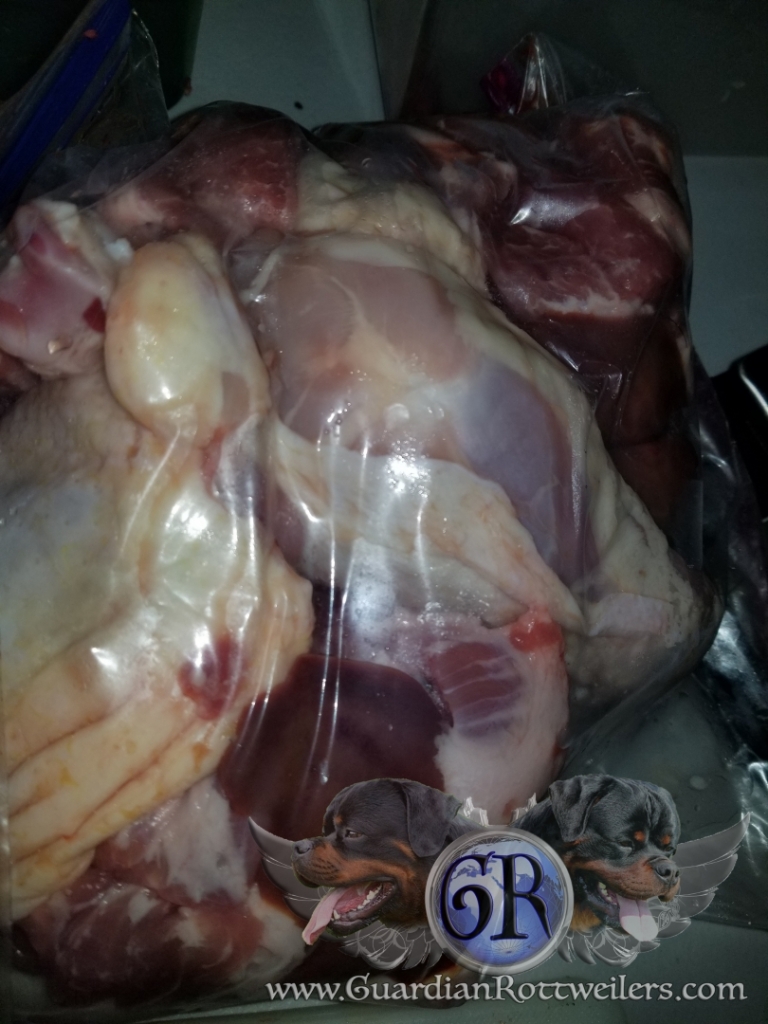
We went to 3 different butchers to get all of the cuts and types of meat we needed for our pack, hauling all of it (in multiple trips) in a Prius! We turned our garage into essentially a butcher shop. Liliana was my sous-chef, and frankly, my right hand in everything. We chopped, quartered, ground and filleted hundreds if pounds of whole chickens, catfish, polluck fish, perch fish, salmon, chicken liver, chicken gizzards, over 40 pounds of chicken hearts, beef kidneys, beef spleen, beef whole trachea, beef lung, beef heart, pork ribs, pork tongue, whole rabbits, turkey wings and ground goat *whew* I think that is about it…
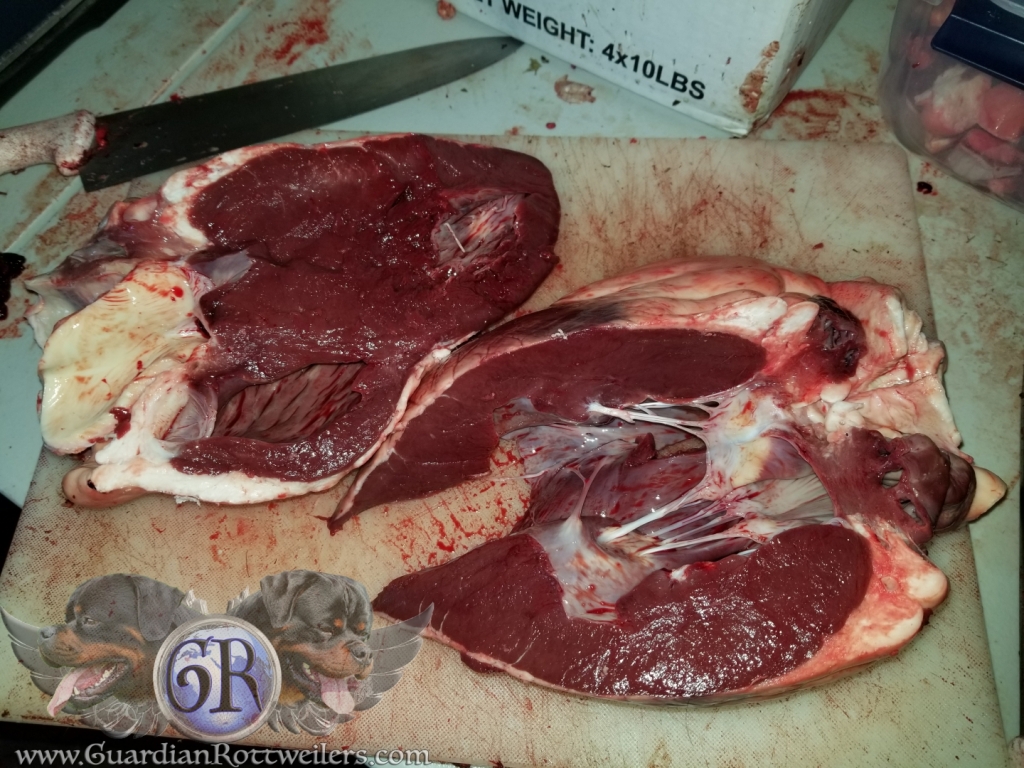
Beef heart- it is much bigger and heavier than you would think. Even though heart is an organ, it is considered a muscle meat when calculating your organ percents.
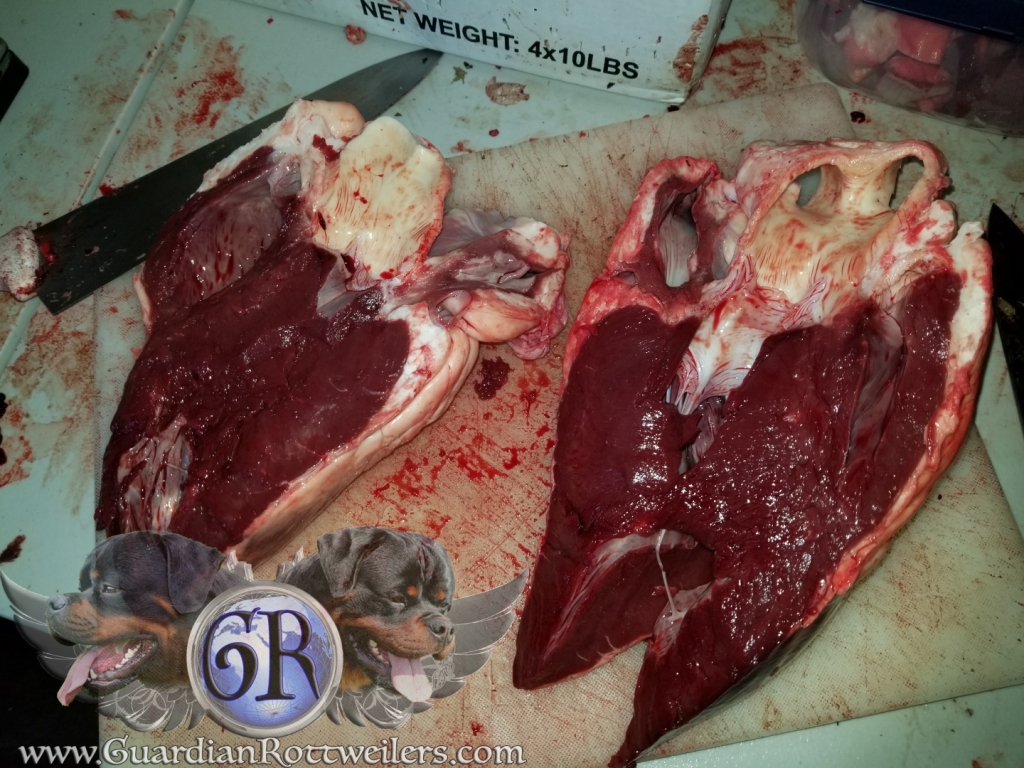
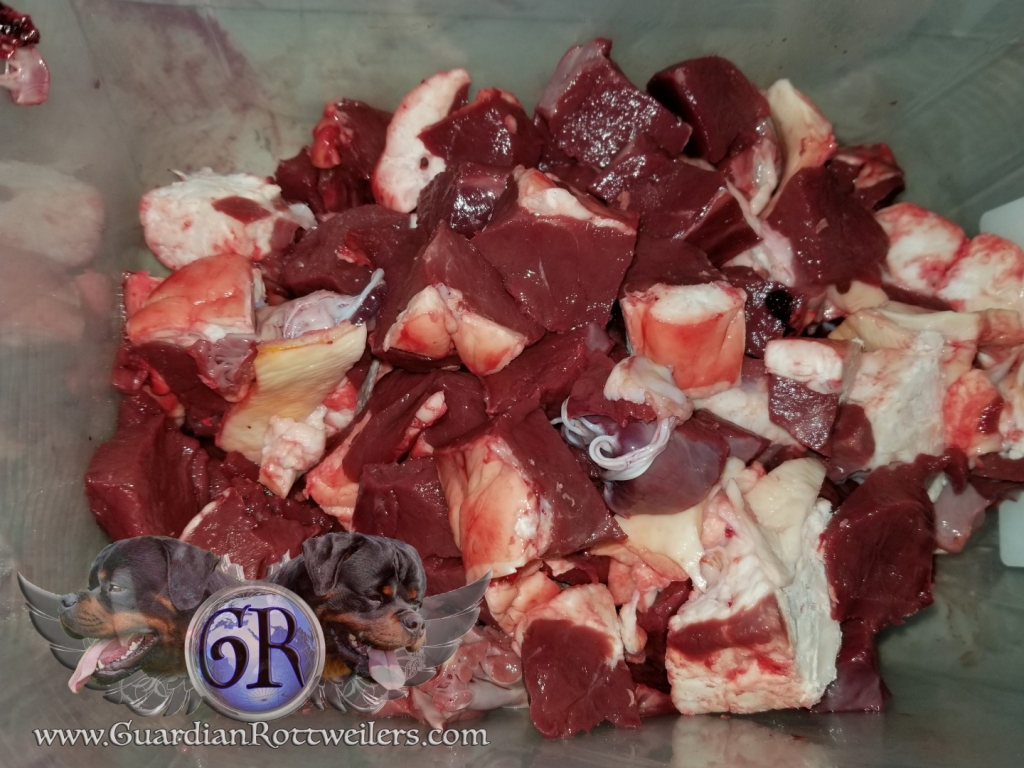
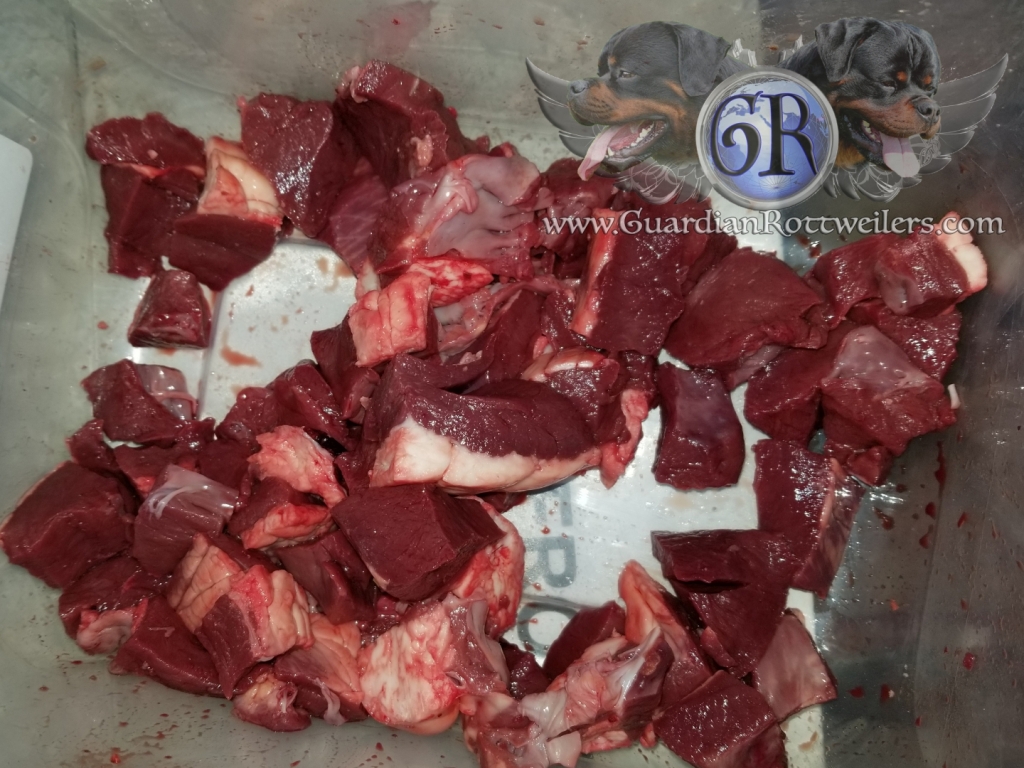
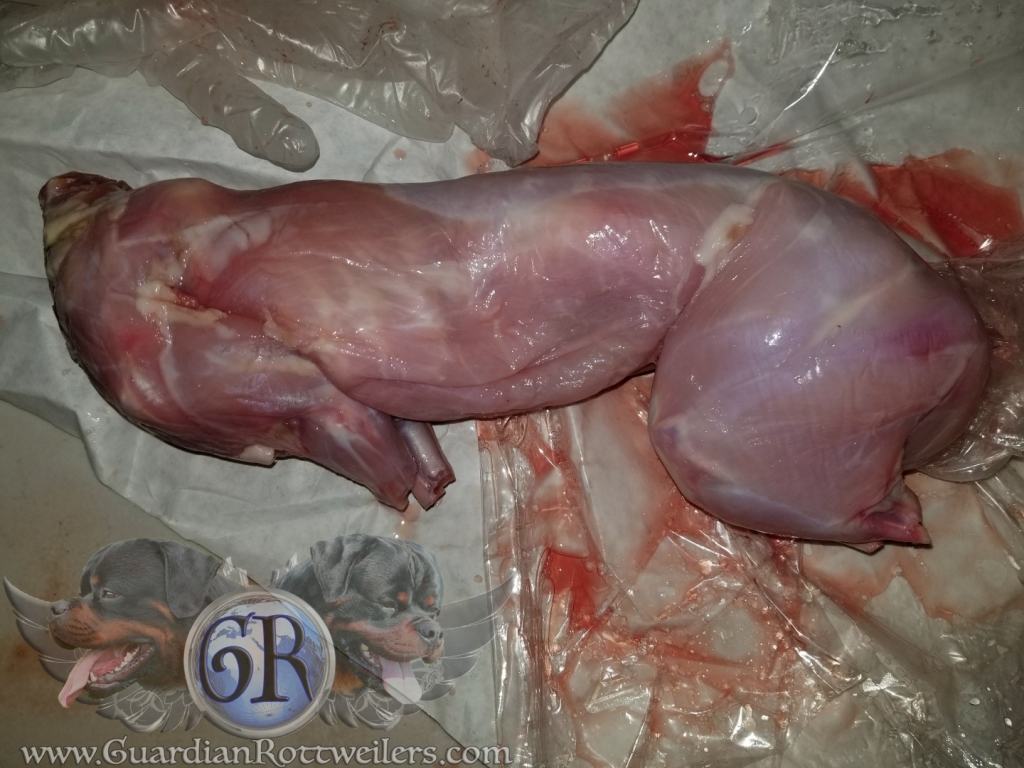
Whole rabbits- minus head, feed and skin.
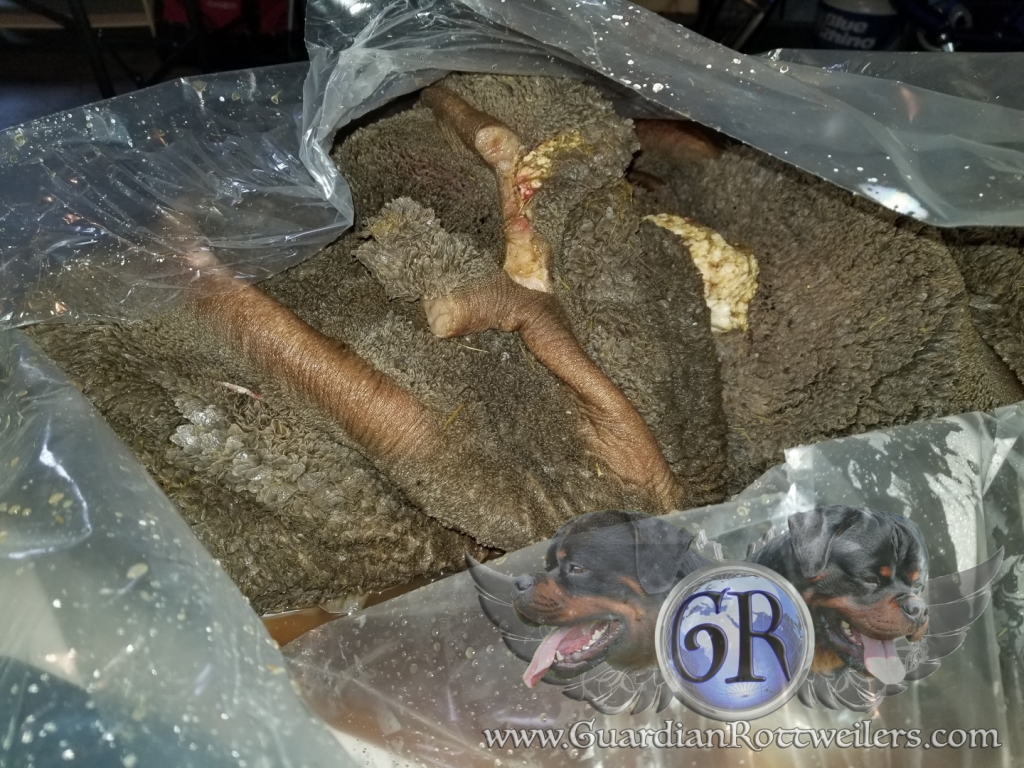
Green Tripe- when I had the kids help me carry this inside, they all thought this was some furred animal! lol Green tripe is the stomach of a cow. This is an excellent source of digestive enzymes and probiotics and each dog gets a couple of chunks a day.

That face says it all! I lost my ability to smell more than a decade ago. I am actually allergic to cats and dogs and was told as a child I could never have an inside pet (clearly I listened, I do not have “a” pet 😉 ) Between the chronic sinus infections and sinus surgeries- well, lets just say, for once, I am not missing my sense of smell! Green tripe is referred to as “green” not because of the color, as it is more brownish than green- but rather because green tripe is not yet washed/bleached. People also eat tripe, however they eat the bleached/washed version. Everyone in the know will readily tell you that green tripe has its own special level of nasty smell. Even the lady at the butcher, who does this for a living, was gagging as she bagged it for me! I do miss the smell of brownies and Christmas dinner in the oven or even simple things like roasted chicken. Not being able to smell changes how everything tastes as well- think of how everything tastes to you when you have a cold. However, for once, I think it was absolutely a blessing that I missed out being able to smell this ‘treat.”
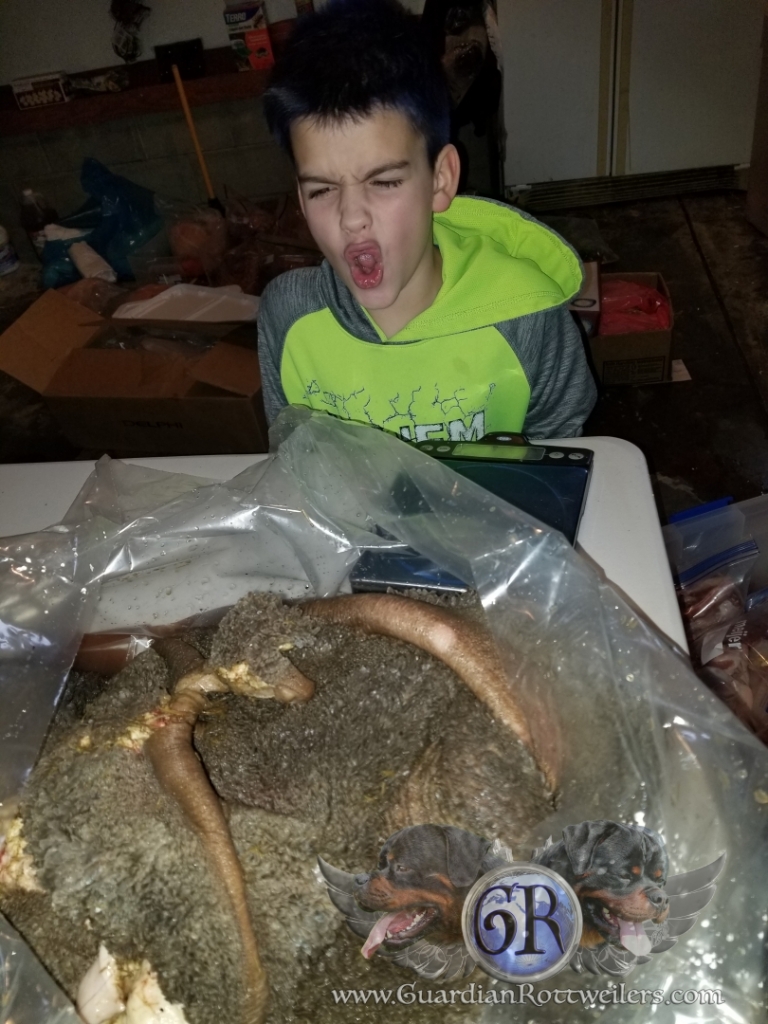
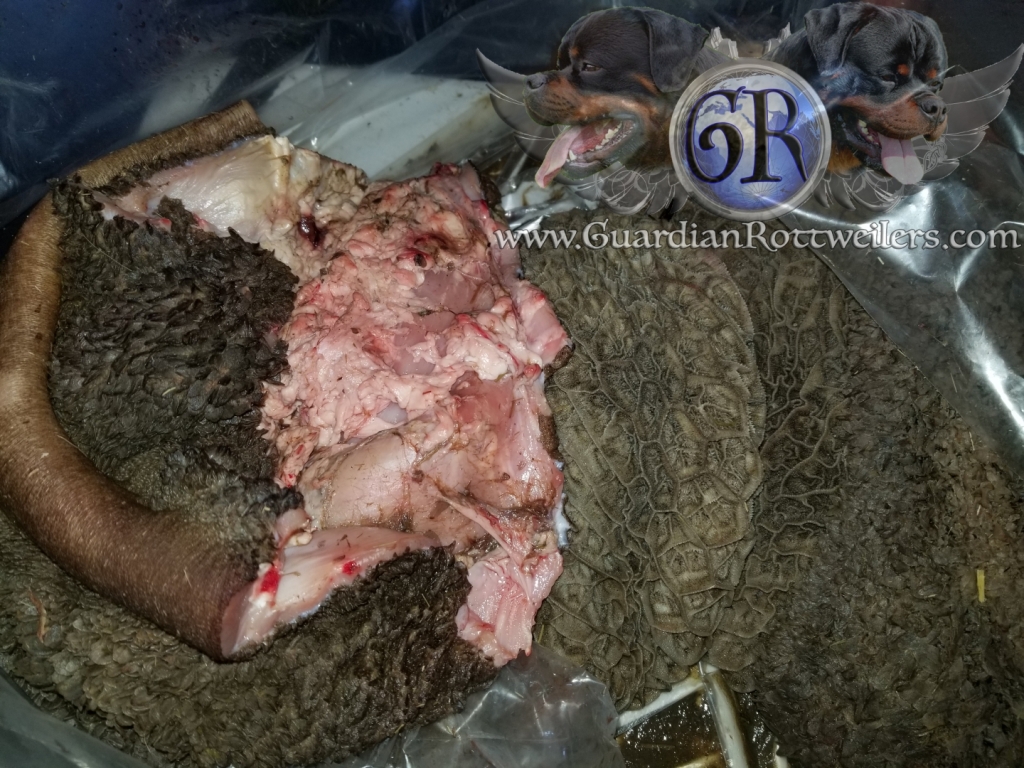

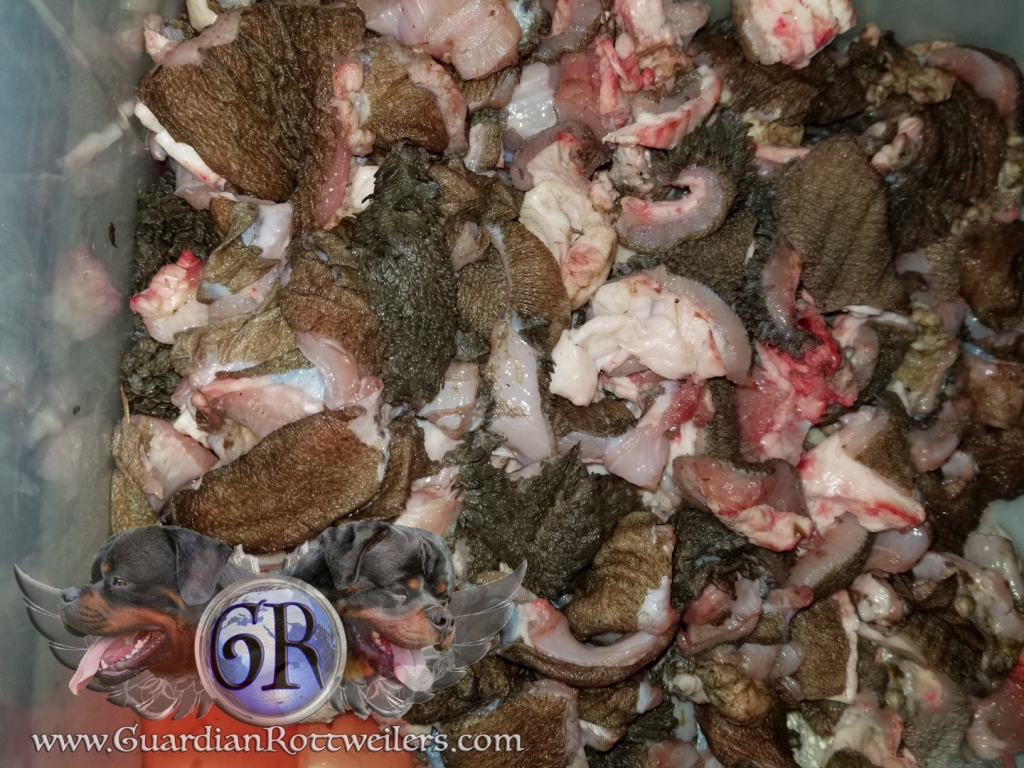
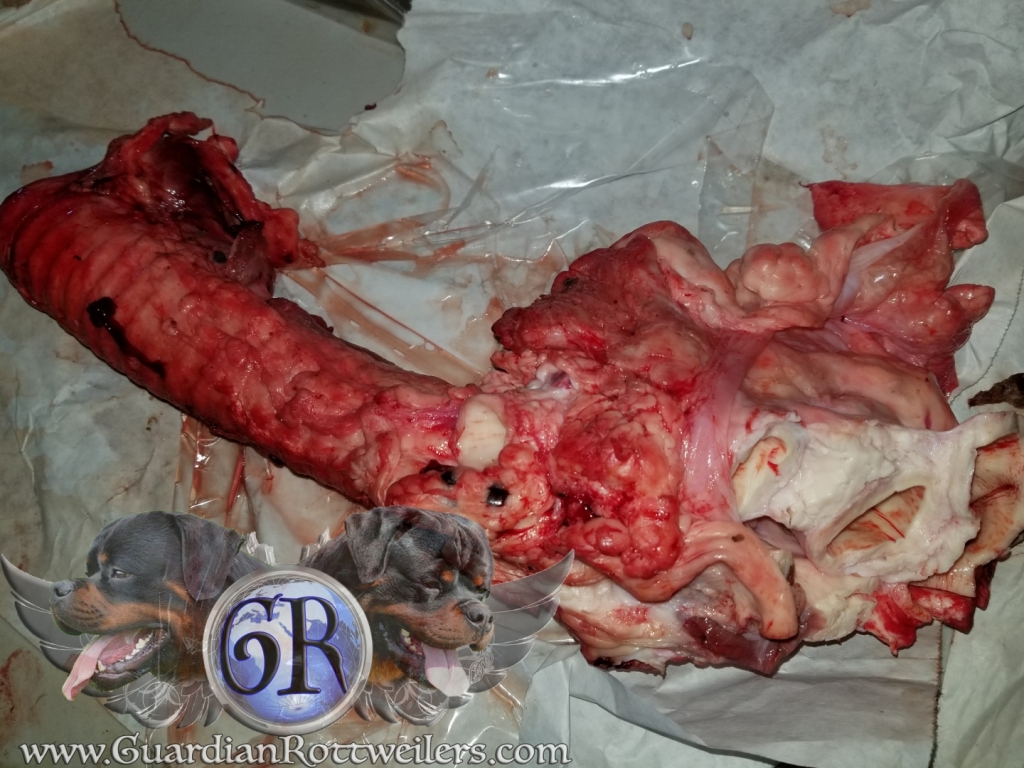
The butcher gave me the trachea, lungs and heart all attached! The kids of course thought this was amazing!
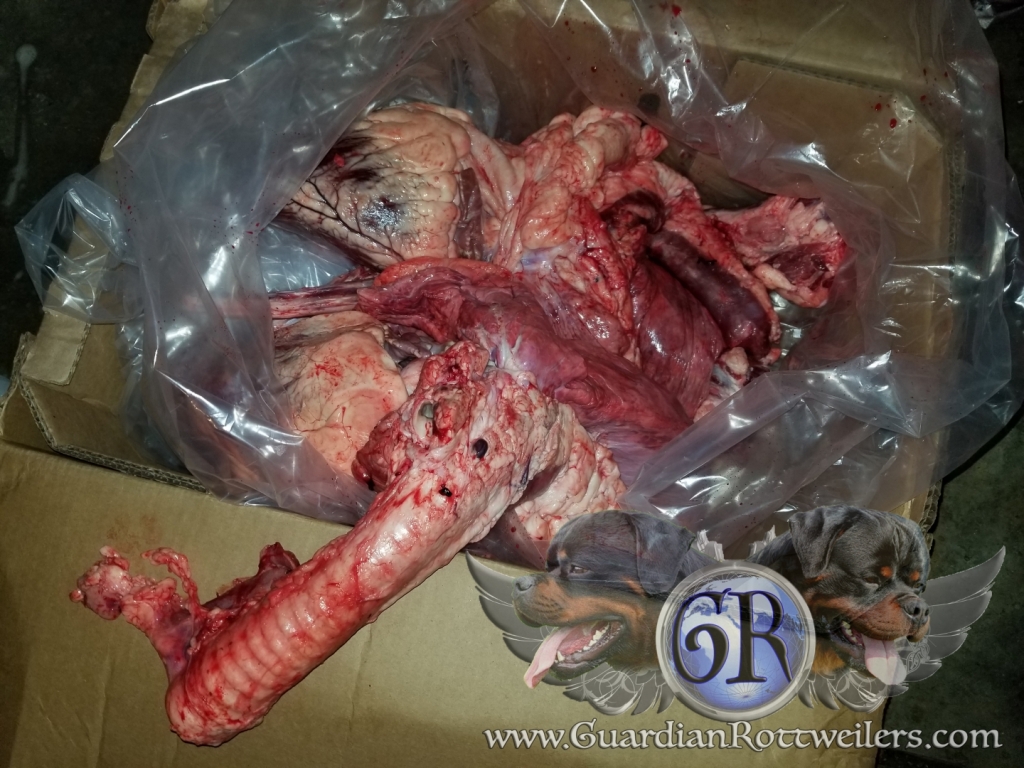

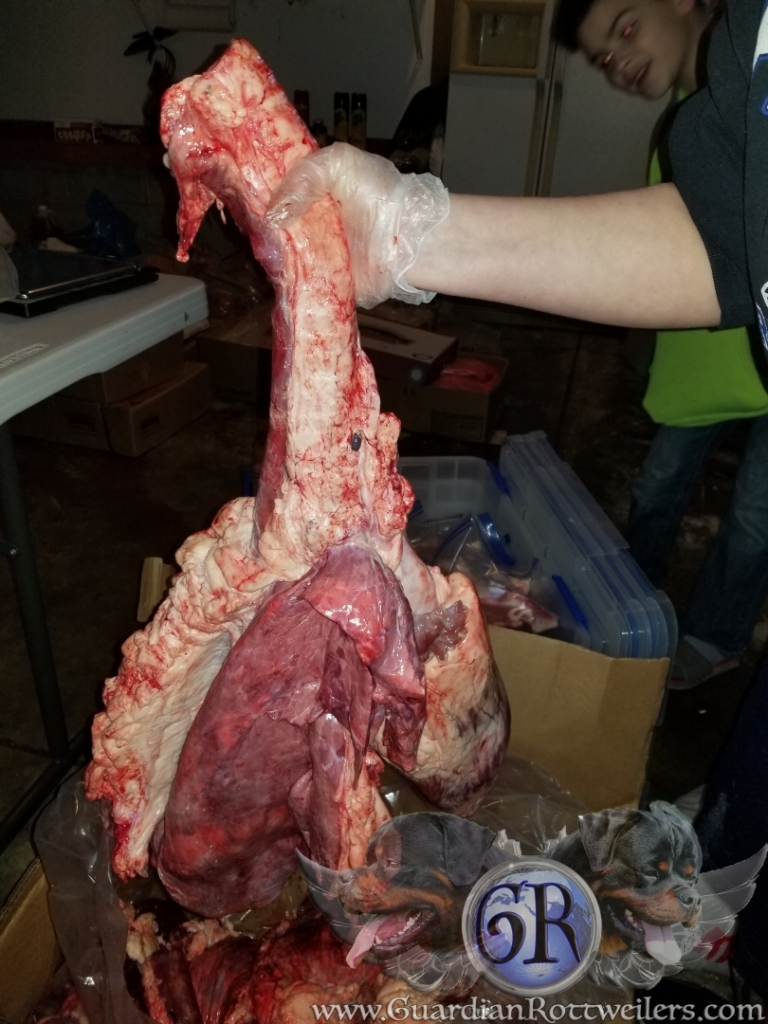
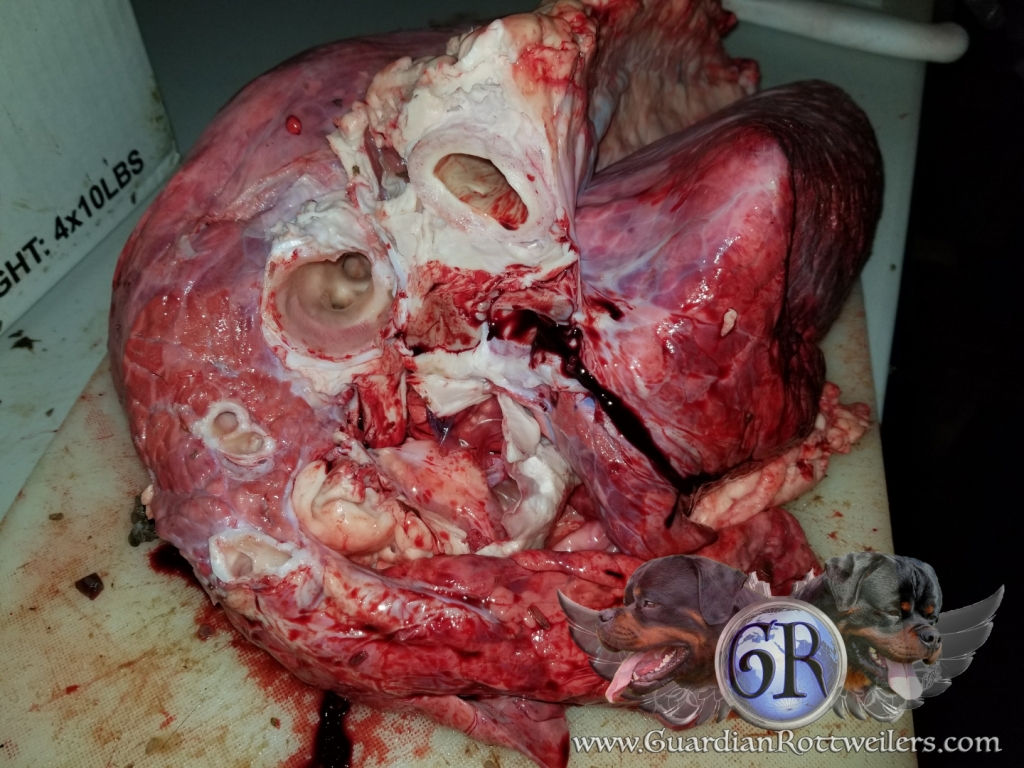

The lungs are massive- bigger than the cutting board!
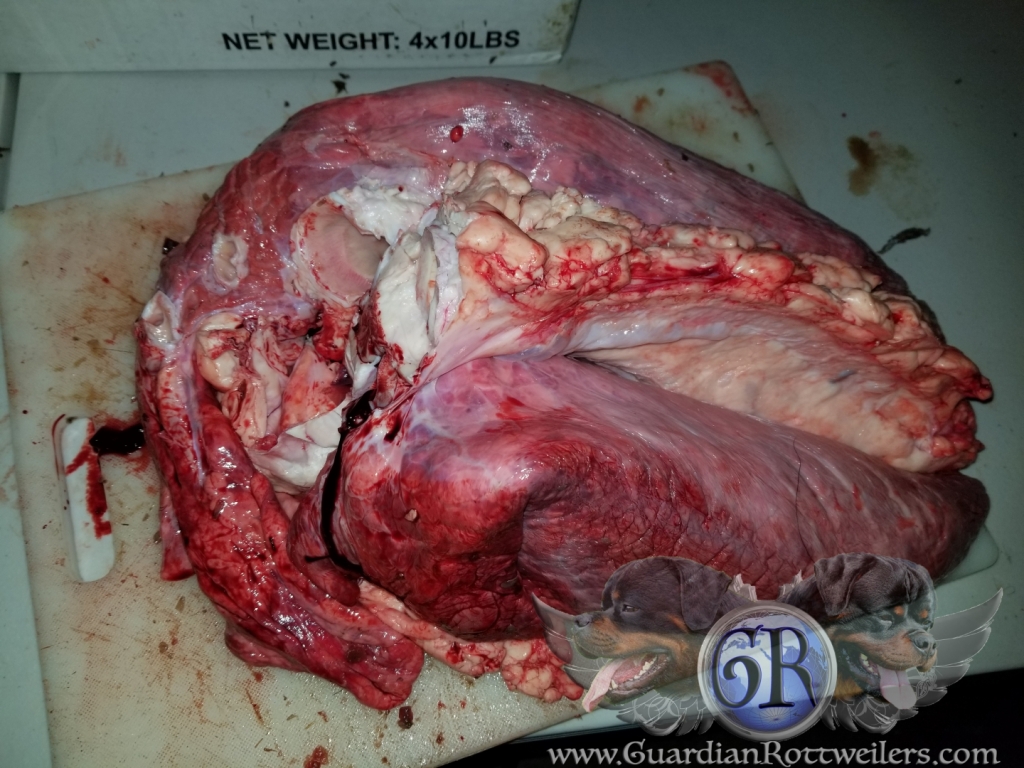
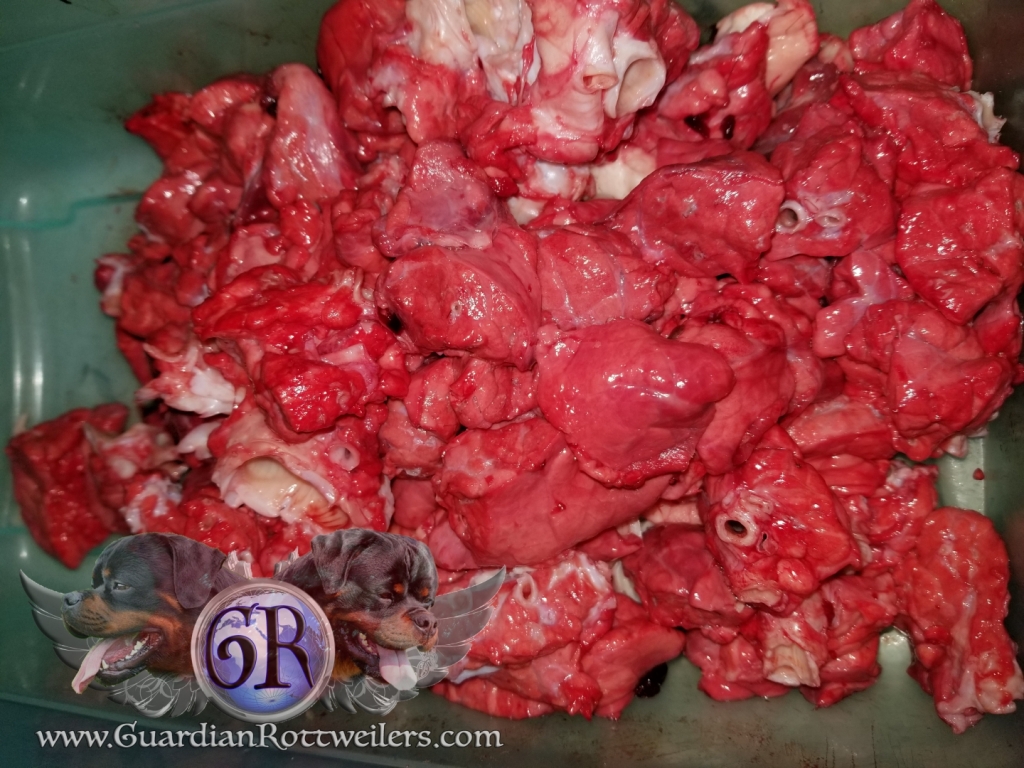
Chopped lung- yum!
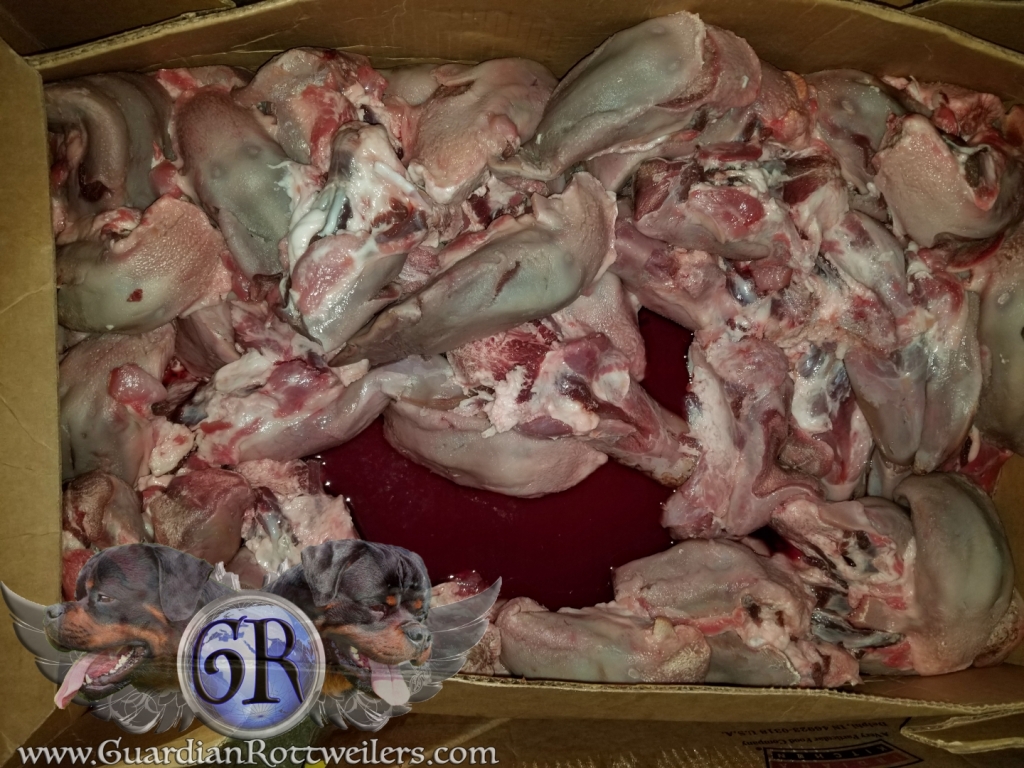
40 pounds of pork tongue- they are SOOO much bigger than you would think!!
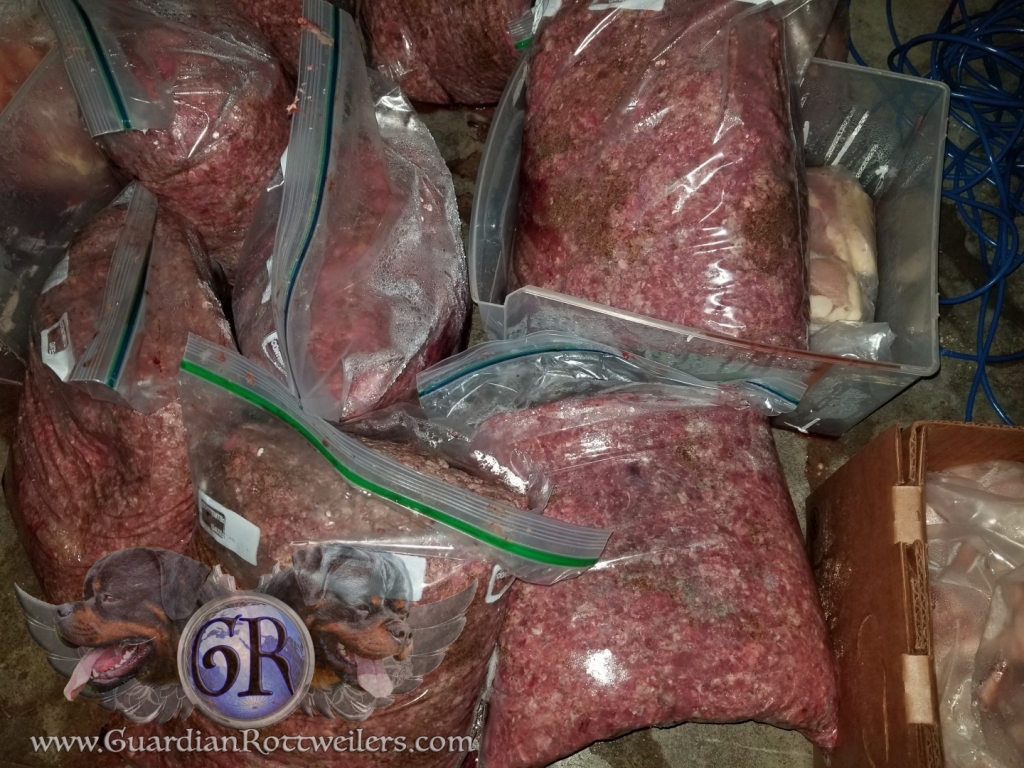
GR’s special ground blend- mostly chicken quarters, beef and a bit of pork butt with some tumeric and ground muscle lipids

Now time to weigh everything and get it bagged into individual meals.
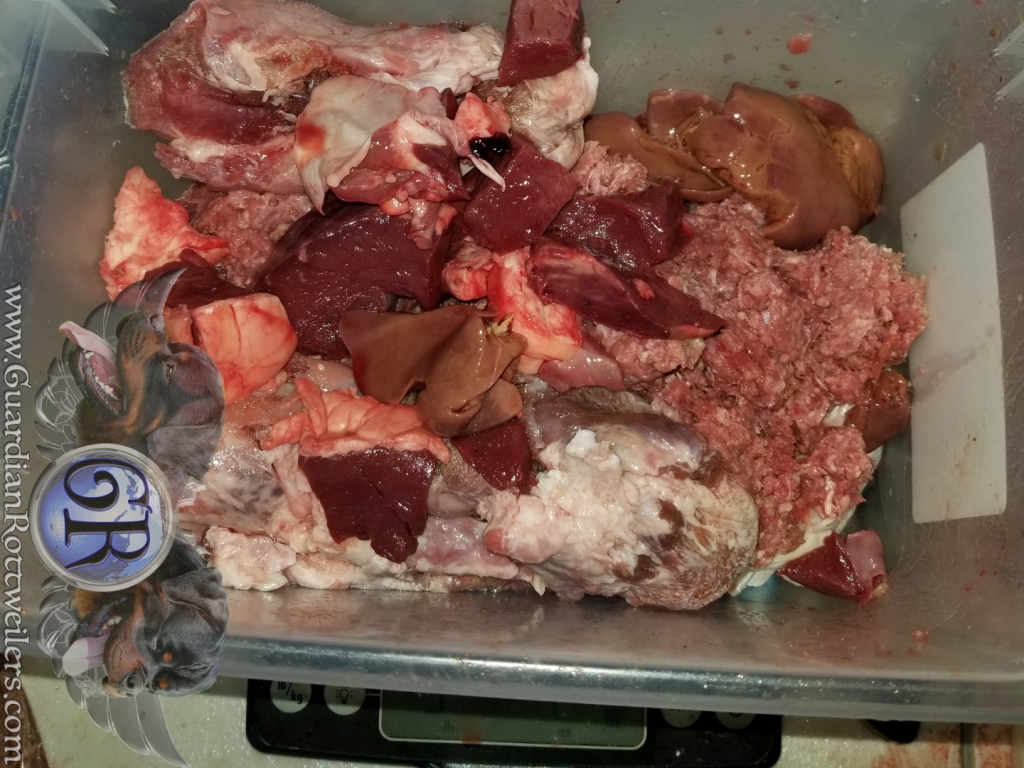
One day’s worth of food for one dog.
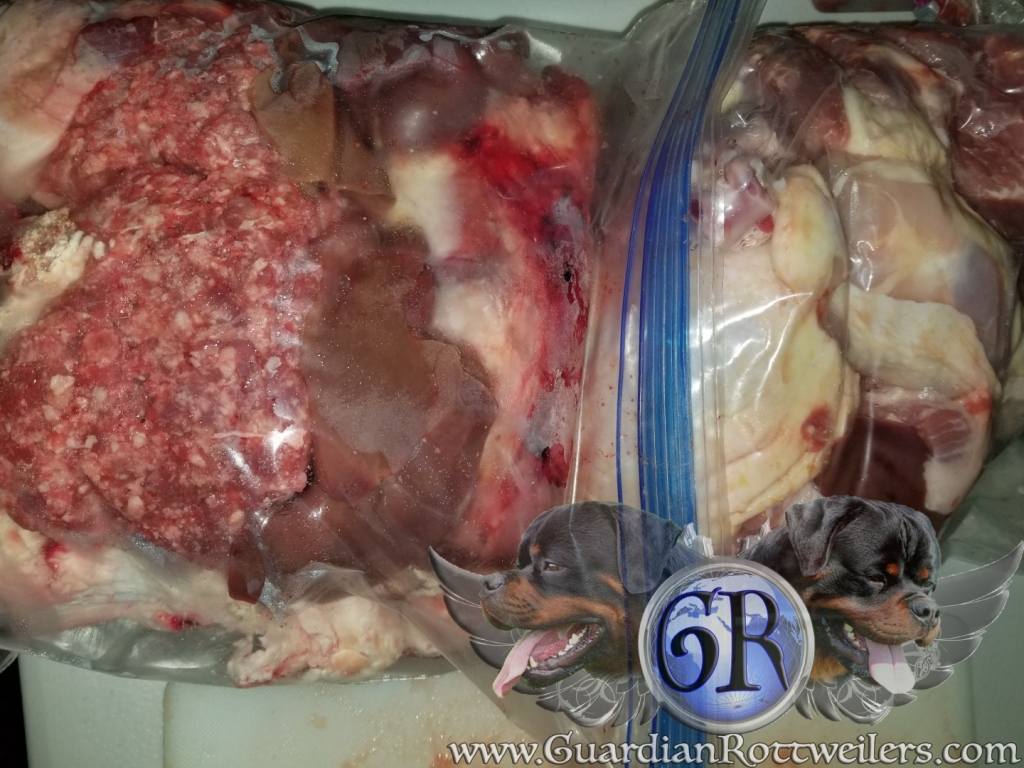
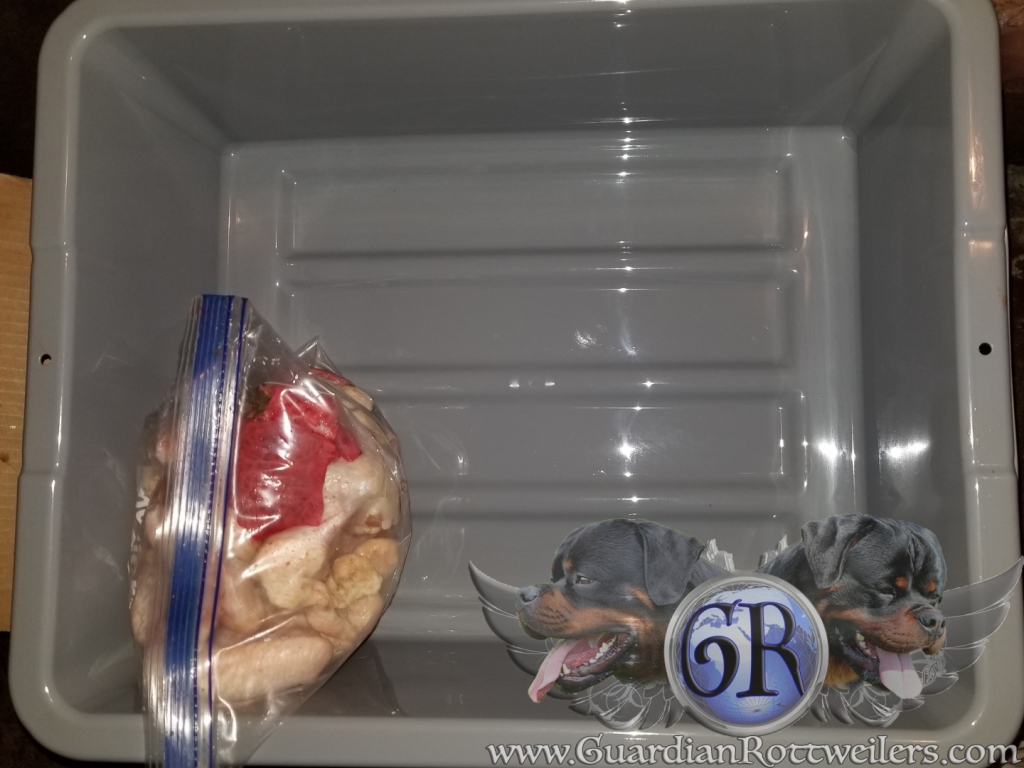
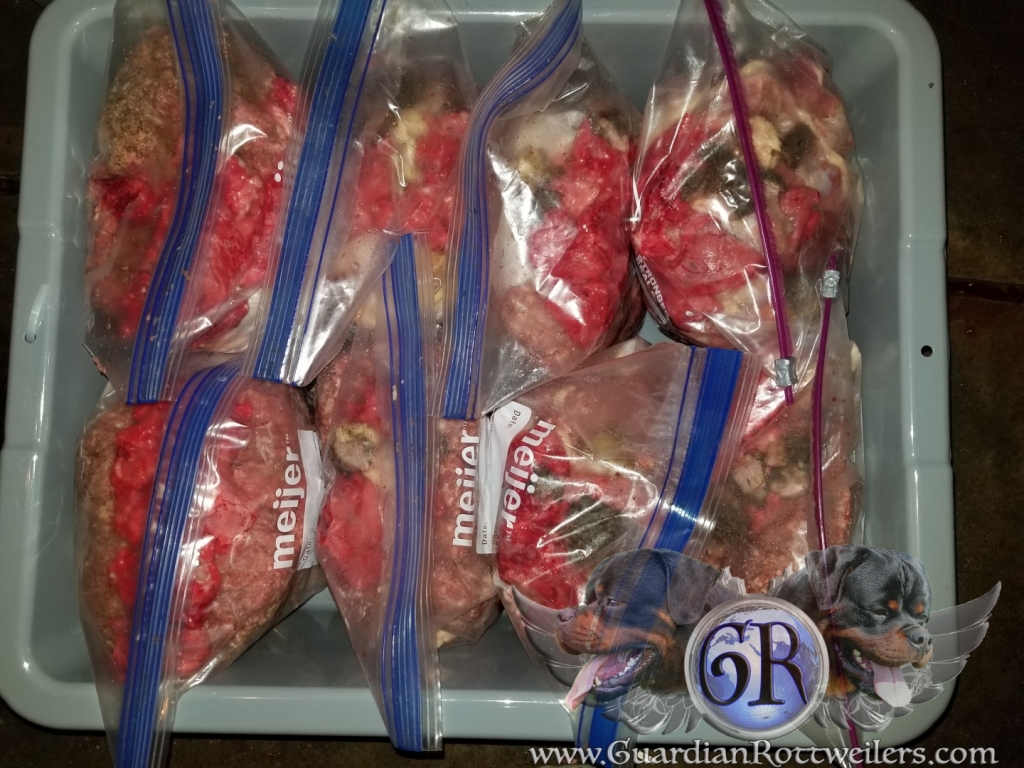
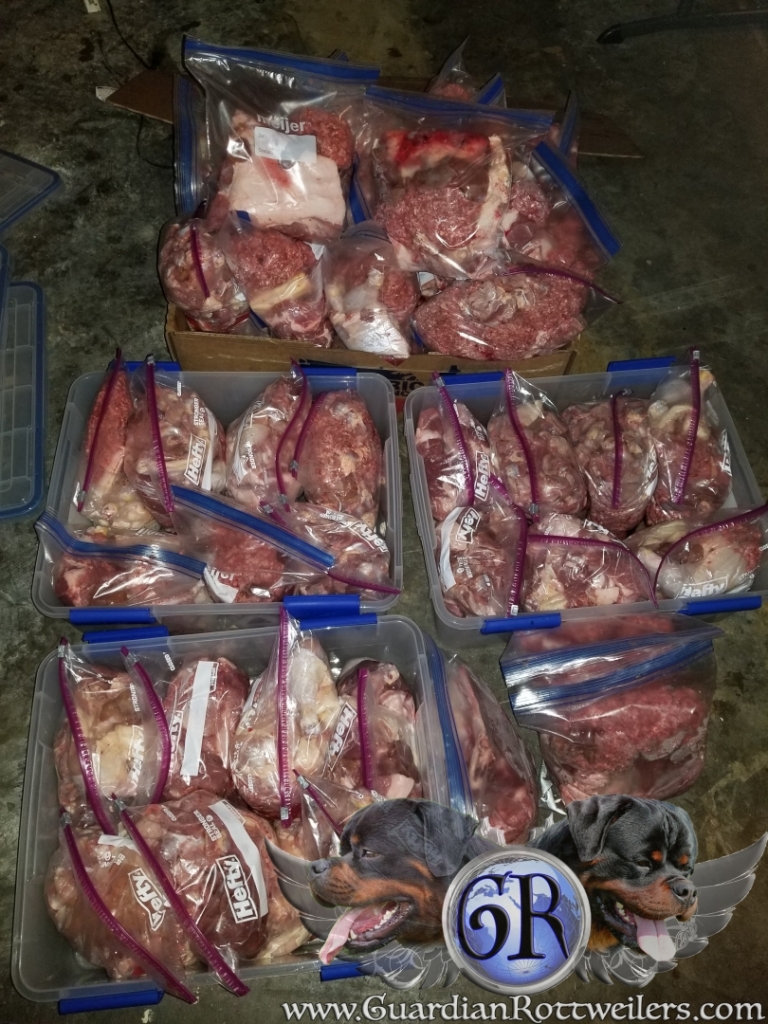

Freezer is full! Lets see how long it lasts…
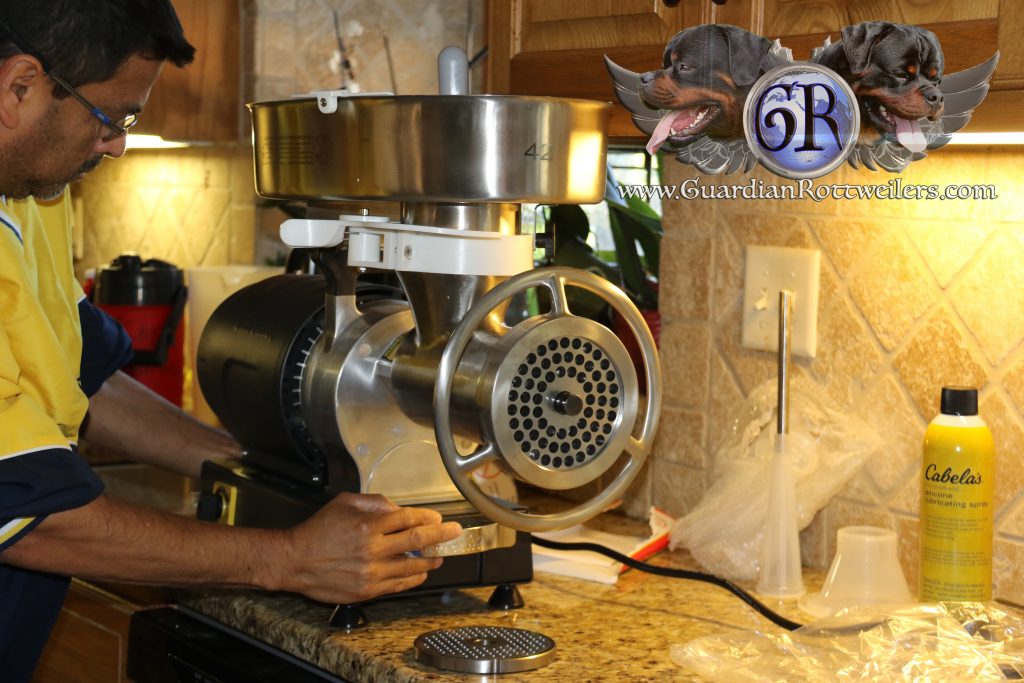
Cabela’s Carnivore Commercial-Grade 1.75hp Meat Grinder

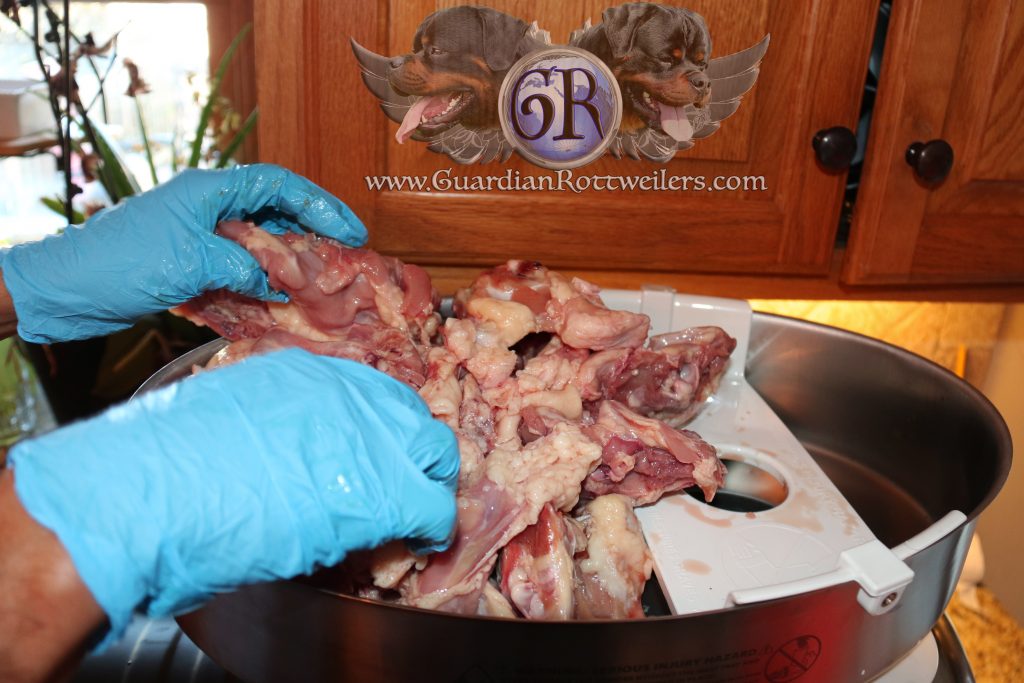
Whole chicken quarters and chicken backs… yum….
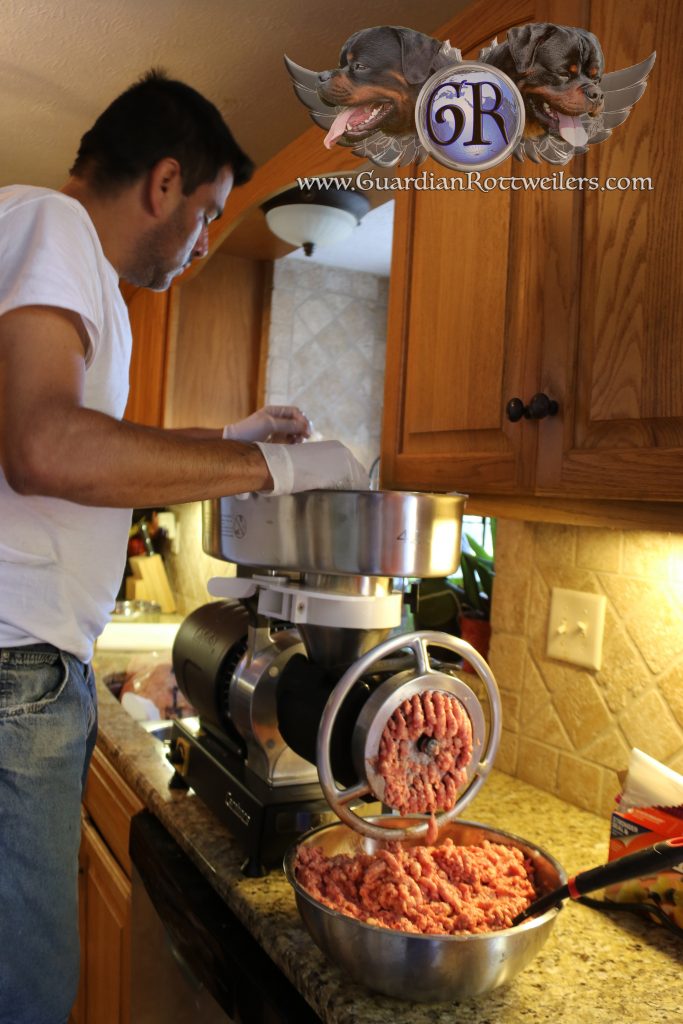
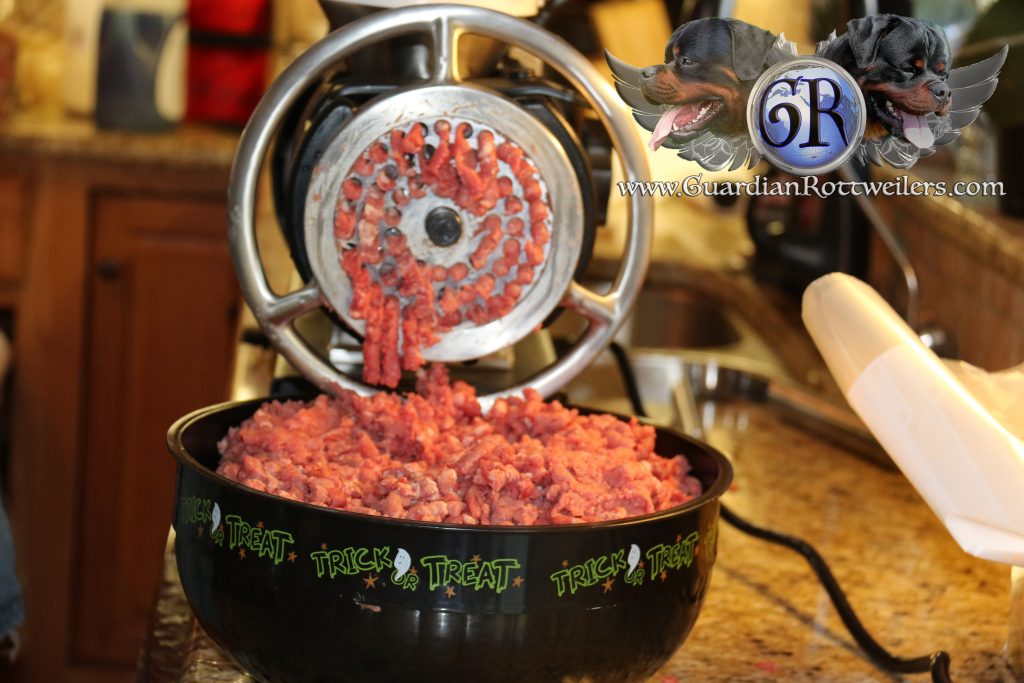
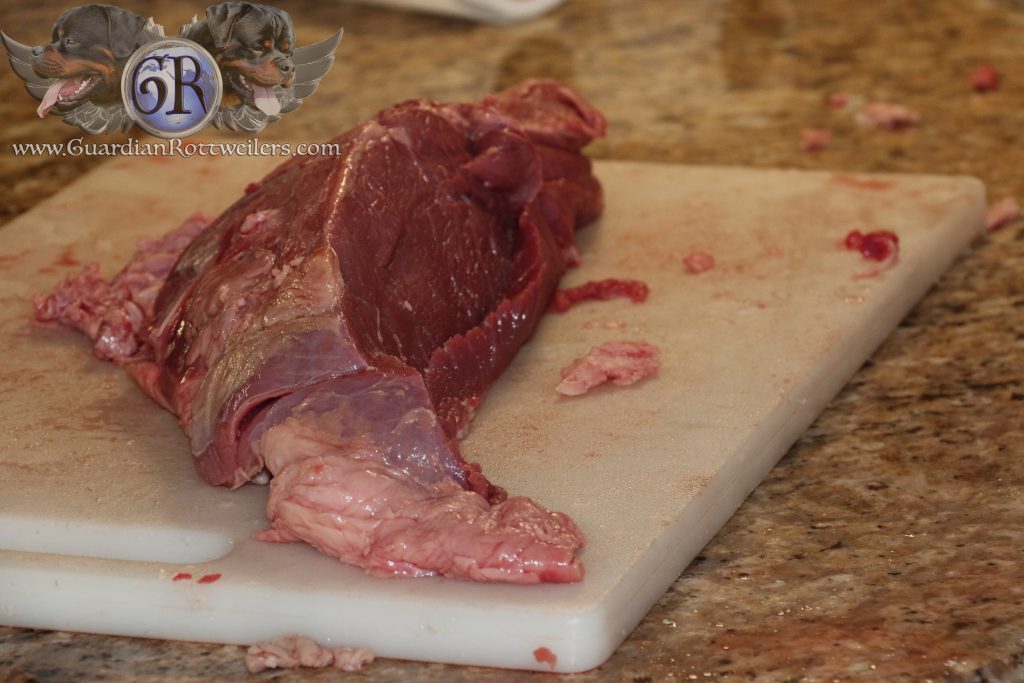
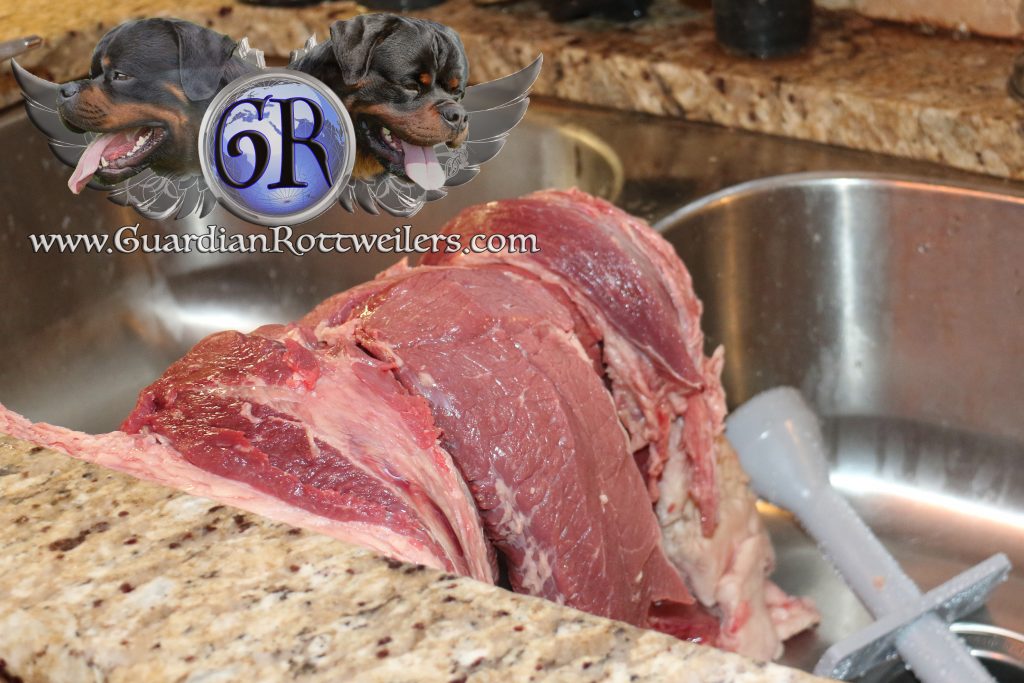
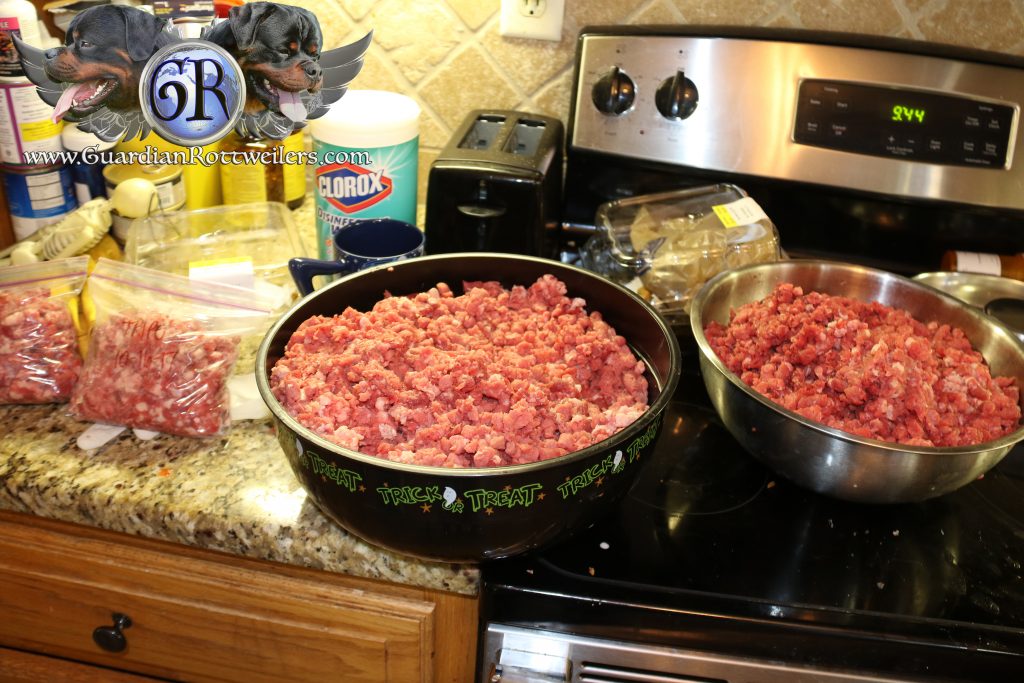
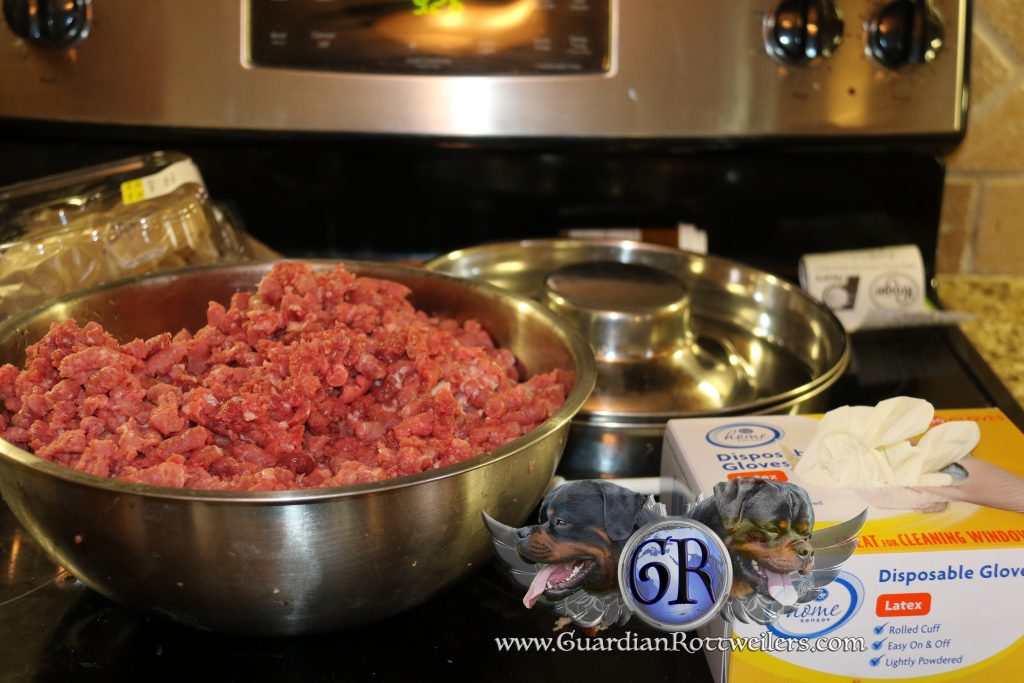
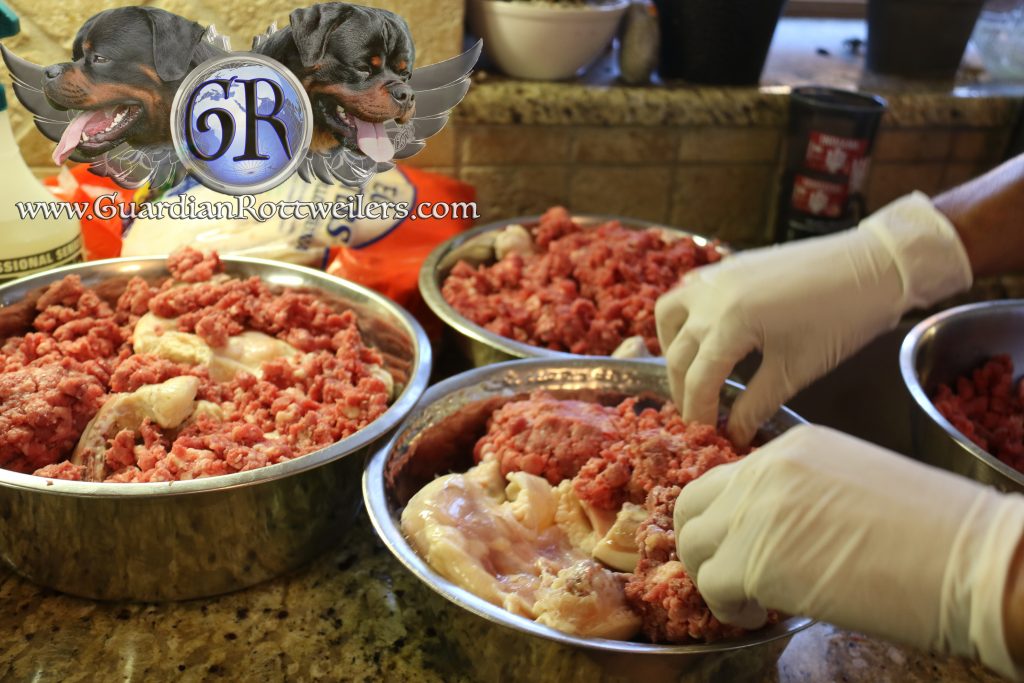
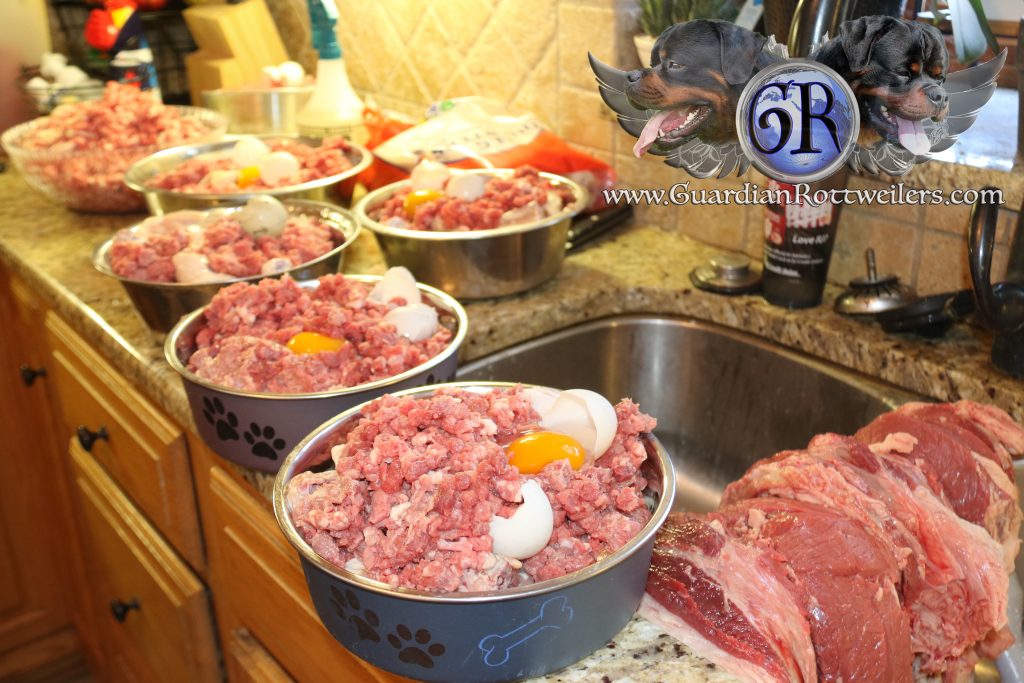
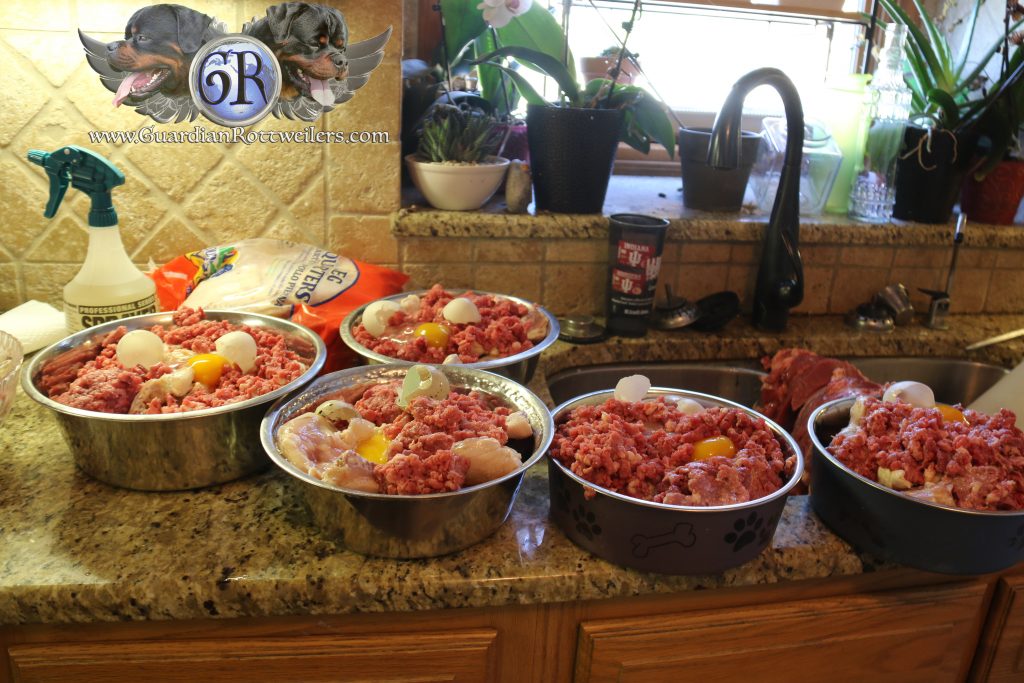
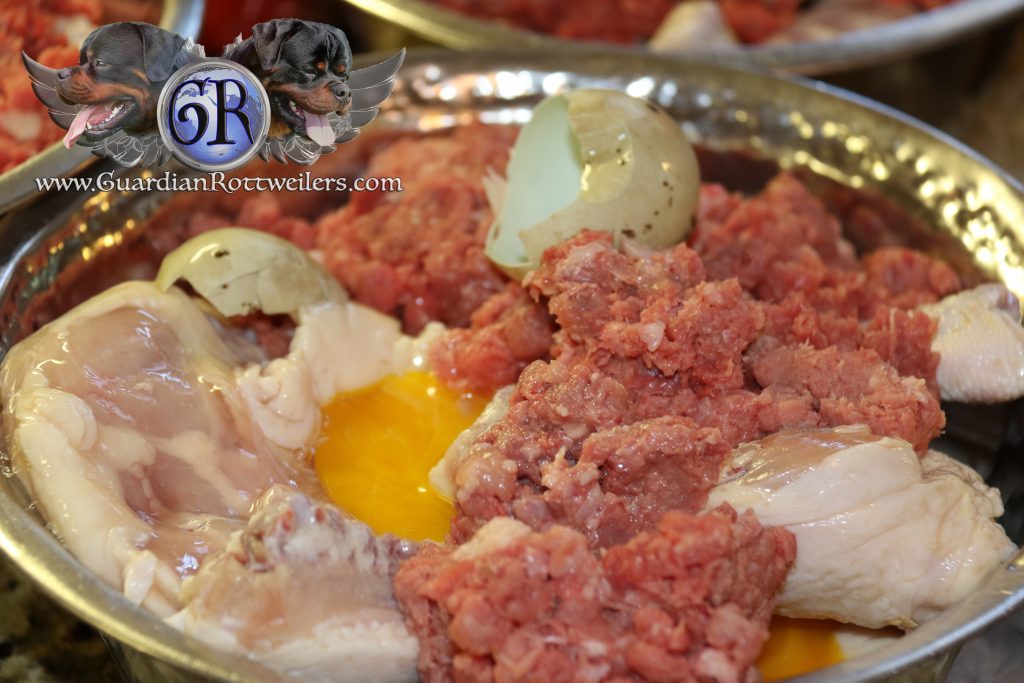
Whole chicken quarters, freshly ground round, a whole egg (shell and all) just laid, and a bit of salmon oil. Breakfast of Champions (no, literally…. this is the breakfast our multi-country and international champions will be having 😉 )
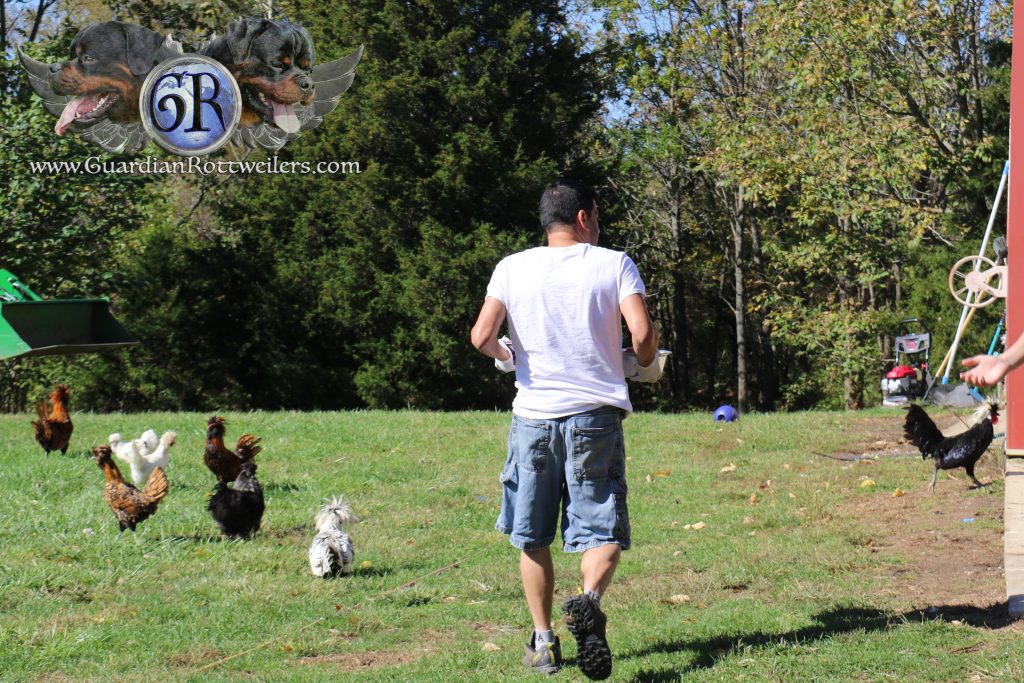

Waiting for everyone to sit politely rather than beg enthusiastically 😉 Geneva looks annoyed waiting for everyone else to get it together 😉 lol
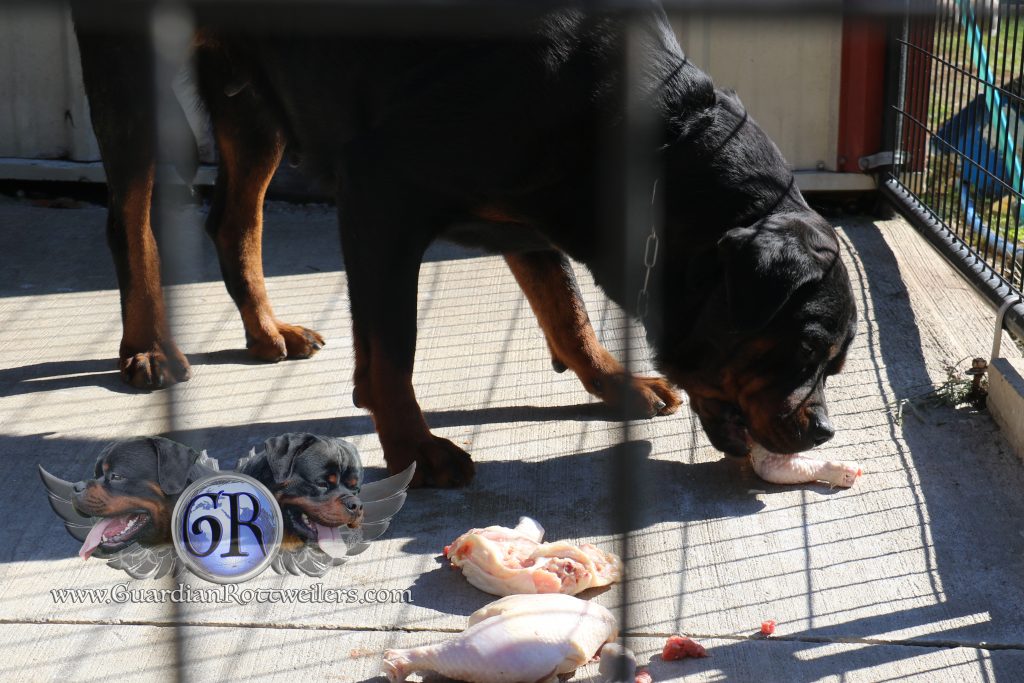


Num, num, num


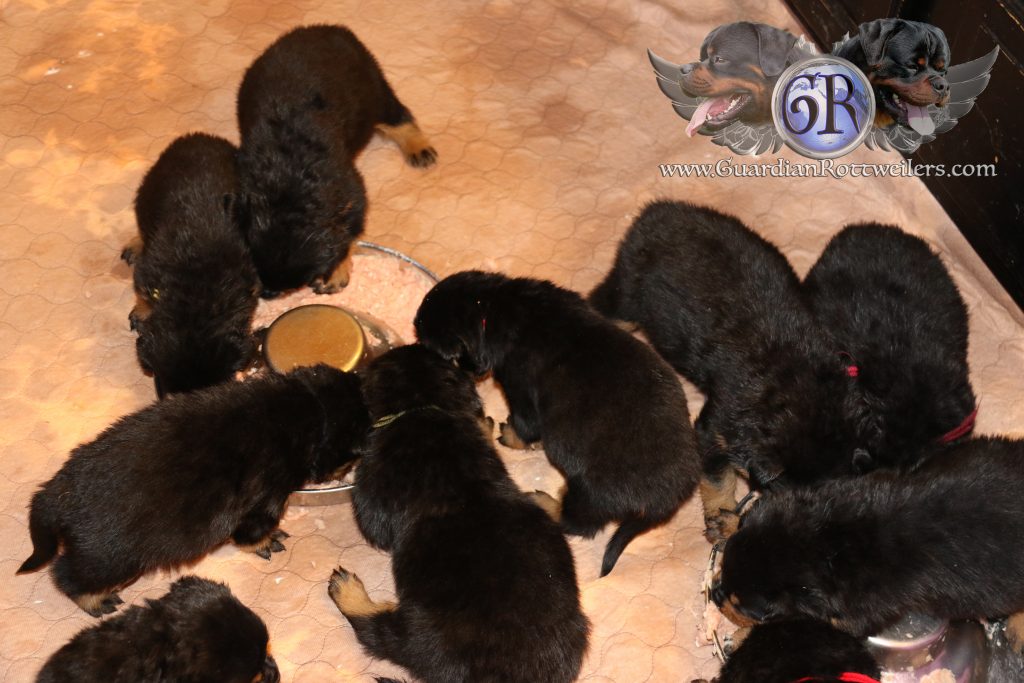

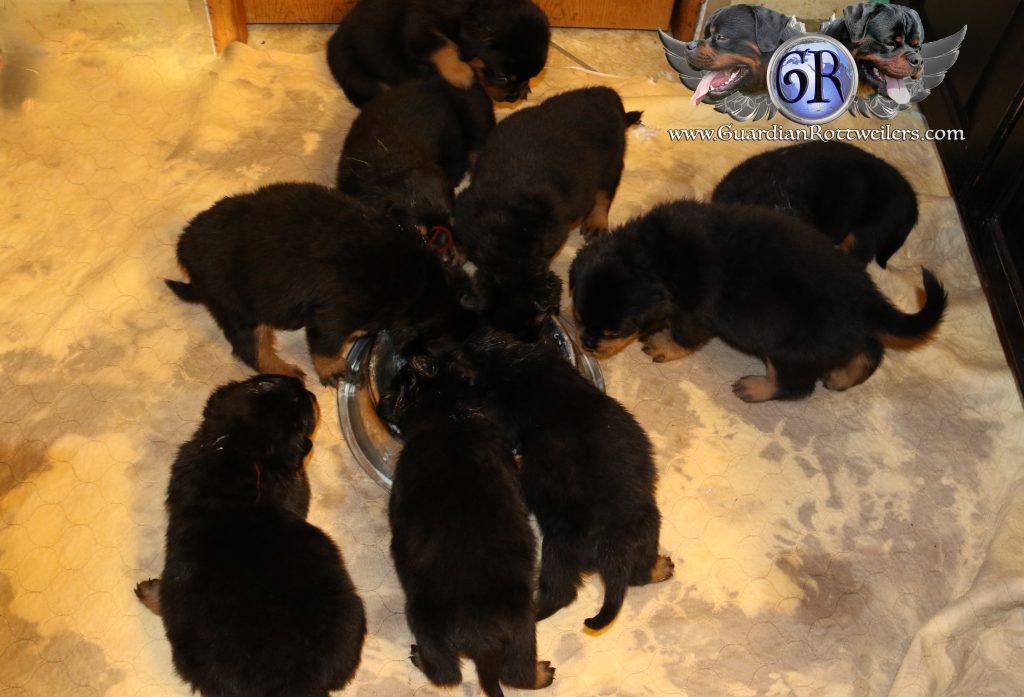


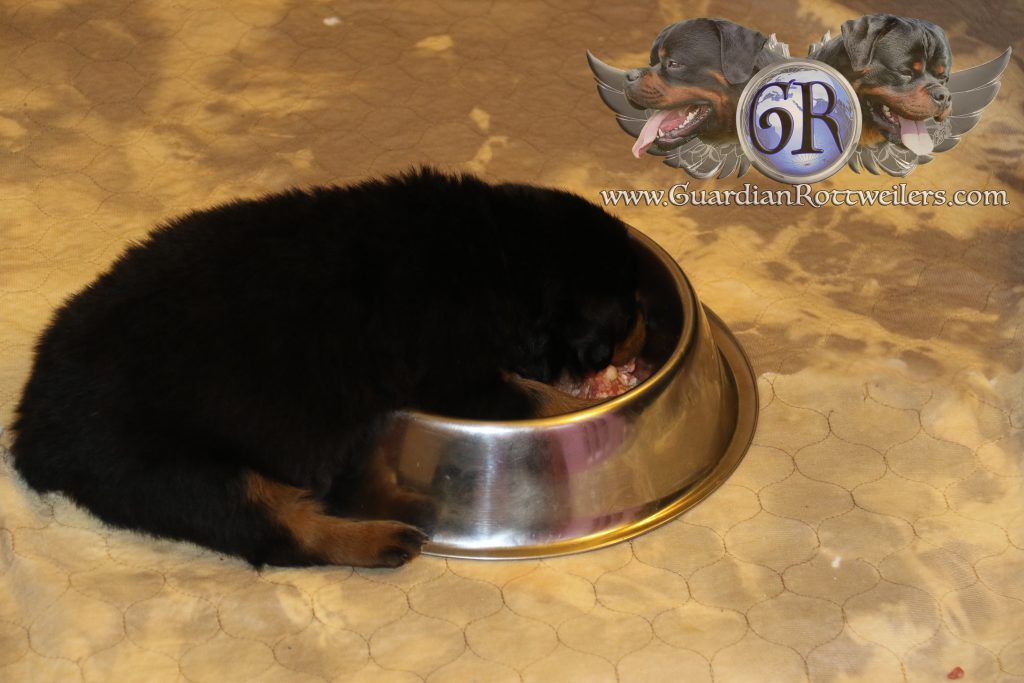
When you are stuffed and tired, but the food is just so good that you can’t stop eating…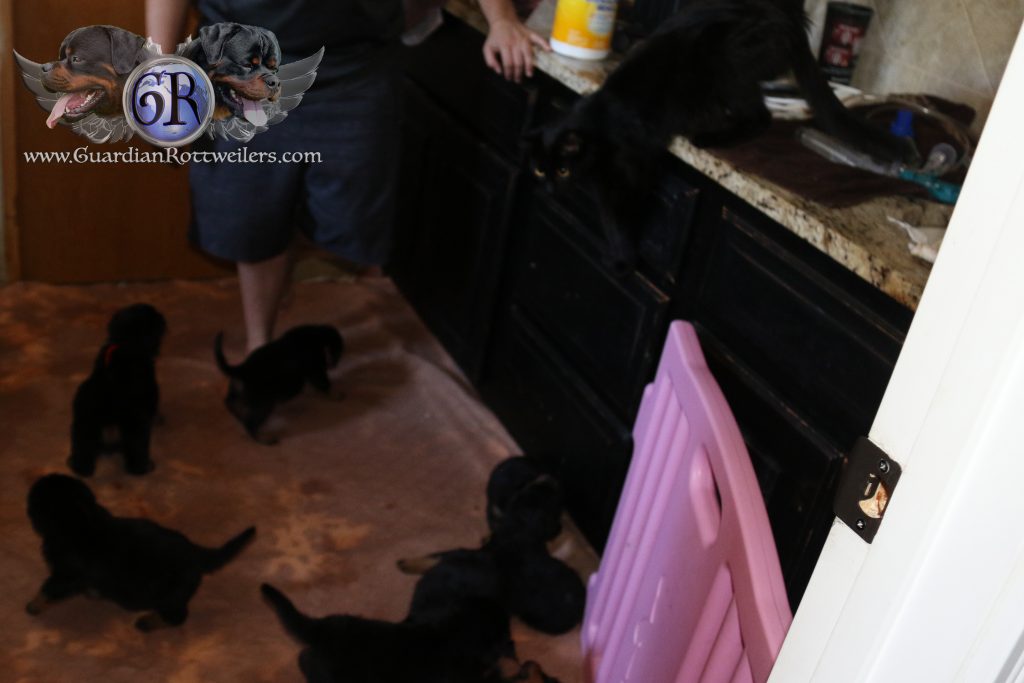
The stray mama kitty came up to visit the puppies <3 I thought she was just going to sit up on the sink counter and talk to them and thought that would make a cute photo, but to our surprise, she just jumped down and greeted everyone! Even with a whole herd of puppies came up to say hello, contemplate nursing, and give puppy kisses, she was so relaxed and chill <3 The puppies were also awesome! They were curious, not at all intimidated, but still so gentle <3 Gold stars all the way around!
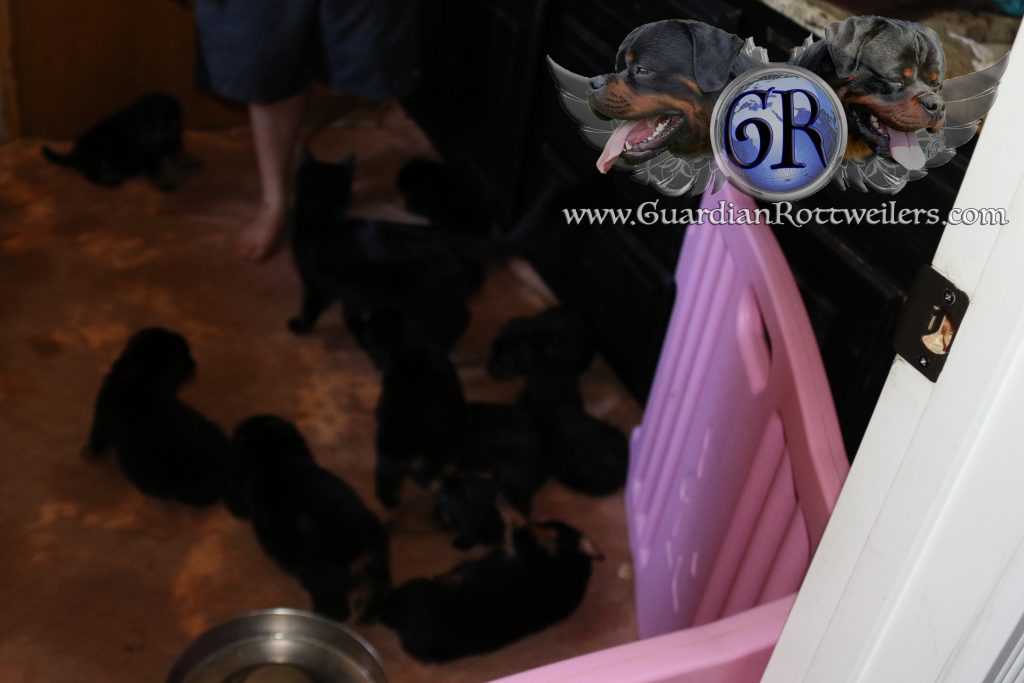


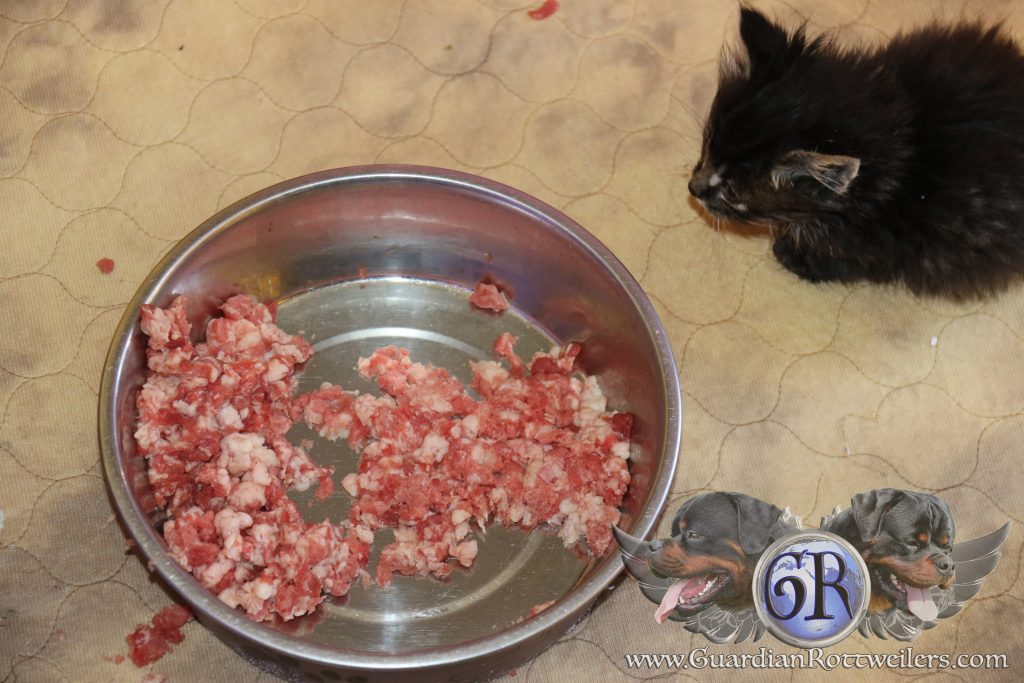
Raw is not just for the puppies! We have never fed any of our rescues any less quality than we feed our ‘high dollar’ dogs- they are all His creatures <3 And frankly, the rescues need all the extra nutrients the most. Of course kitties too 😉 I had SOOO much fun watching these guys eating raw for the first time. It definitely brought out their inner tigers 😉 If there was any wonder whether or not the kitties would take to the raw, it took the kitties about 0.1 seconds to dispel that fear!


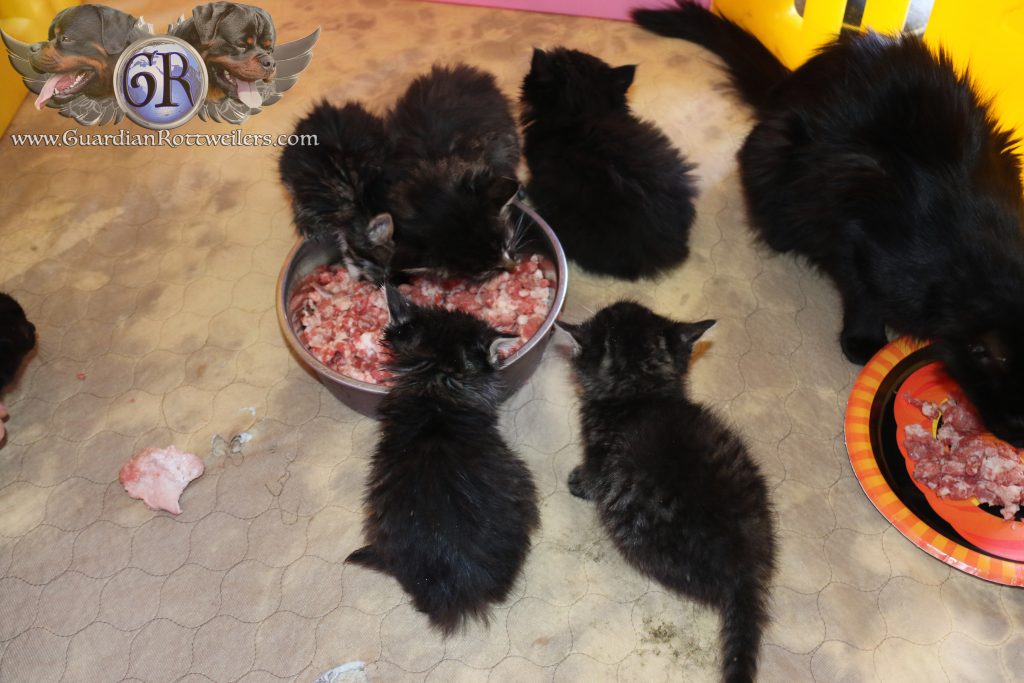
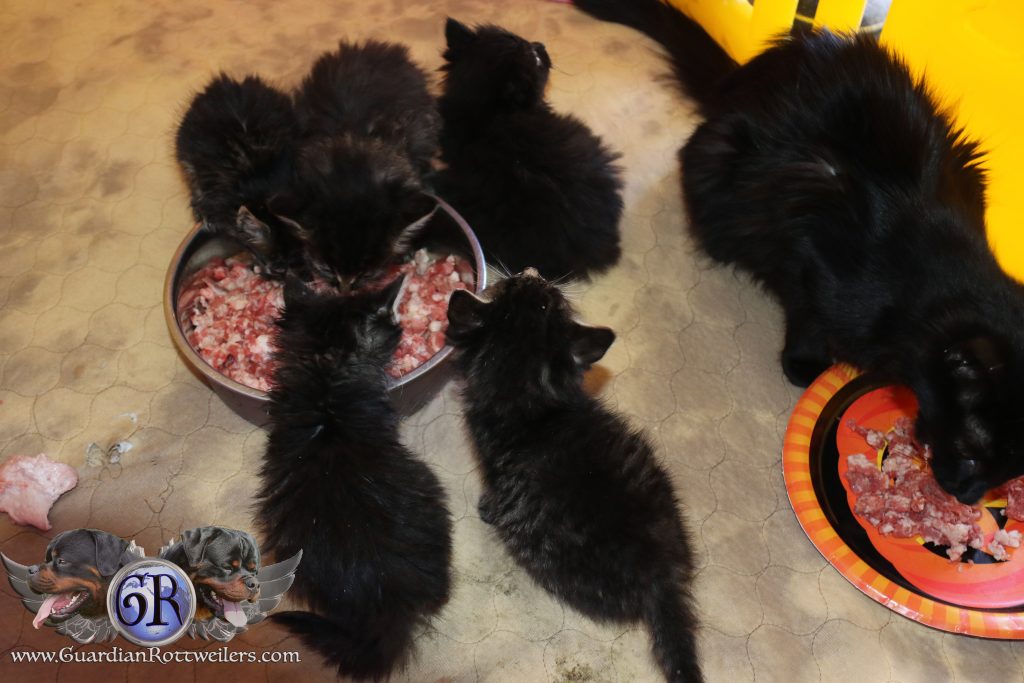
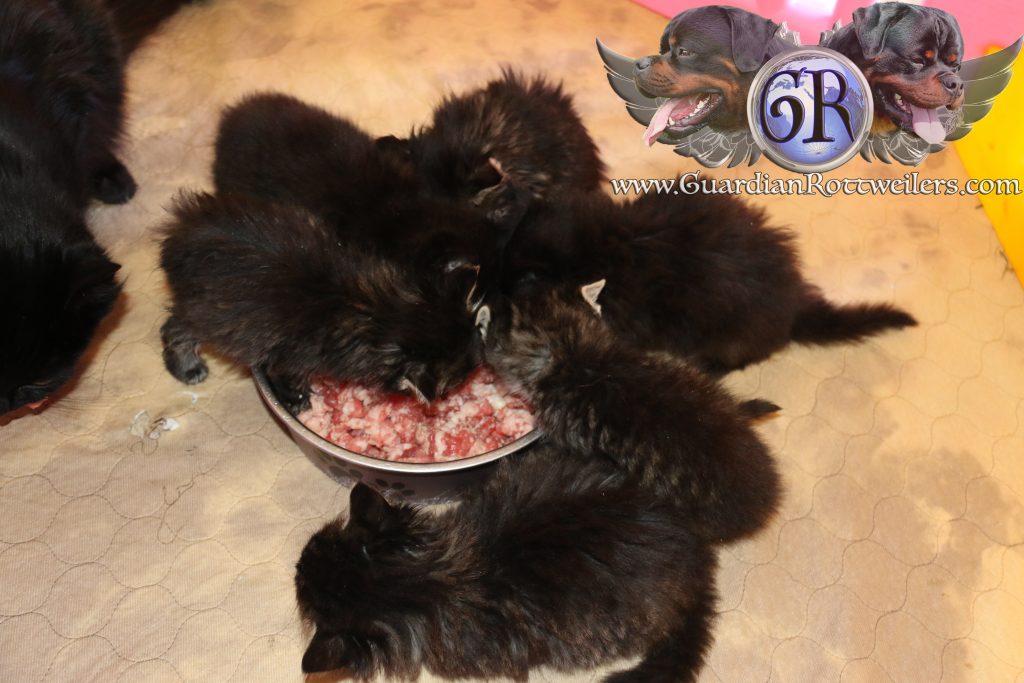
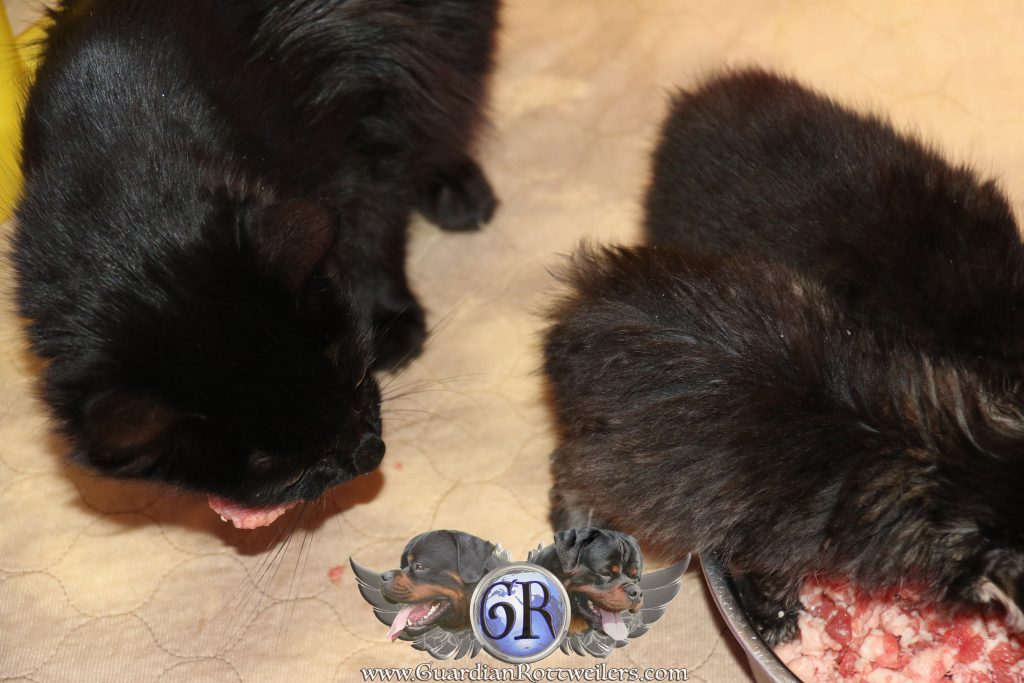
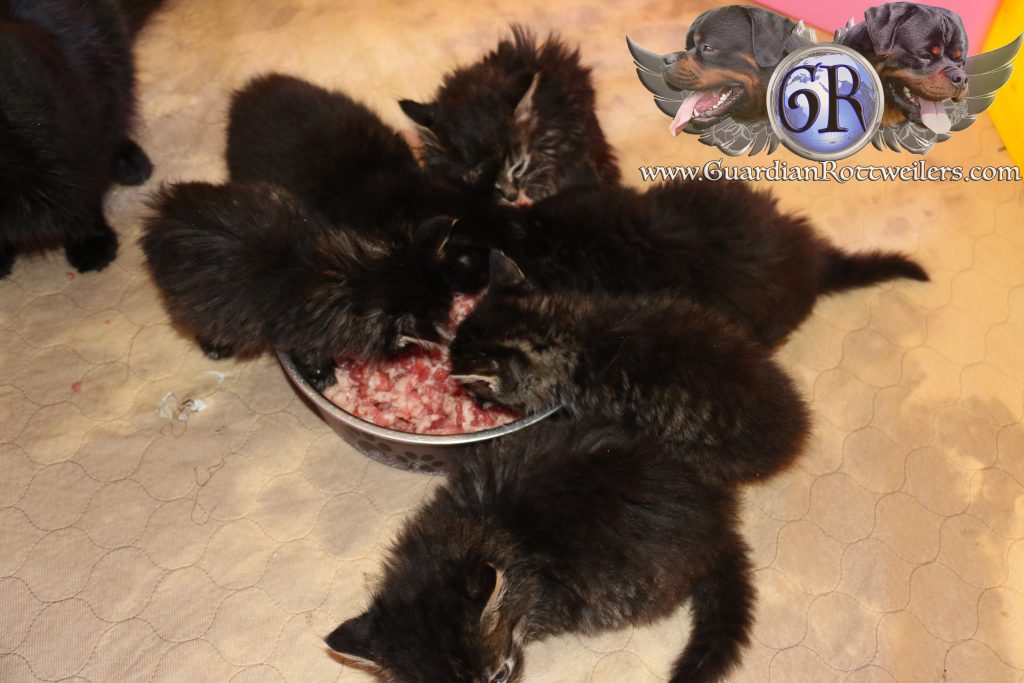
A few tips:
First, don’t get too caught up in measuring everything exactly every day. You did not eat your breakfast this morning by having precisely 3/4 cup of juice, 4 grapes, 1/2 cup oatmeal and 2 strawberries. Equally, dogs in the wild do not go up to a caracass and go “I think I need about 3 bites of liver, 2 bites of the kidney, 2 bites of spleen…” they just dig in. Instead, feed them the way you eat- balance over time. You want to keep the ratios at about 5% liver; 5% other secreting organs and 10% bone, the rest muscle meat. If you feed a whole carcass (rabbit, chicken, duck, etc.) that is intact, then you will automatically have your balance more or less. If you are feeding bits and pieces, then just make sure you balance it over time. They do not need to have 5% liver in every meal- they can have a good bit of liver today and then again in a few more days. Not every meal has to be a perfect ratio.
Next tip- variety. Just like there is no one perfect food for us, there is not for them either. While poultry will be high in glucosamine and chondroitin, it will be lacking in the higher iron, vitamin B12, zinc, etc. that you find in red meat, and red meat will not have as much B12, Vitamin A, Riboflavin, etc. as liver. We try to have 2-3 different protein sources in each meal. For instance, maybe some ground beef, some chicken quarters and a duck egg might make a meal.
Next- try to feed fish 2x a week. So much good health stuff in fish from the inside out- heart on out to skin and coat.
Stool- your dog’s stool can be the biggest help in seeing what your dog needs more or less of. If the stool is too chalky and dry, your dog is getting too much bone; if it is too loose, s/he may be getting too much liver/organ and/or not enough bone.
Eggs- whole eggs, shell and all, are a fantastic food source. Shell provides calcium, and the egg provides high quality protein and 13 essential vitamins and minerals! You can give the egg whole to your dog and watch him play with his toy until it breaks and reveals the liquid gold, or you can just crack it open over a bowl of food. We have found that each of our dogs is different. Some refuse to eat the shell so we break it up ourselves and mix it in with the muscle meat; other eat the shell first; others will eat all, but only if you break it for them, and other enjoy the game of play before the meal. Some, like Isis, crunch through the whole thing and can eat a basket full like it’s popcorn 😉
***HOWEVER!! Very important to note! Pups/youth under 1 year of age should ONLY be fed egg yolks raw, never the egg white UNLESS IT IS COOKED. Meaning, they can eat the whole egg, if the egg is cooked, however, if it is raw, the yolk only.***
Egg whites have in them an enzyme inhibitor called Avidin. Avidin can actually interfere with digestion in puppies and young dogs. During the digestion process, Avidin can interfere with the absorption of biotin (vitamin B7). This can be a problem, because biotin is responsible for lots of metabolic processes, and is essential for hair, skin and nail health. However, when the egg white is cooked, Avidin changes structure making it less able to inhibit biotin absorption.
Raw and kibble (dog food)
All of the research I have read suggests that feeding raw and kibble at the same time is not a good idea. First, they digest differently (kibble digests acidic and raw digests alkaline). The other important consideration is why/how dogs can get very sick and even die from salmonella and E.coli in commercial dog food (kibble), but rarely if ever with raw. This is because as canine has a very short digestive system compared to humans. Between their short digestive system and the balance of their gut bacteria, they are literally made for eating carrion, even when not fresh. It processes through their system efficiently and quickly leaving little time for bacterial growth. Kibble, unfortunately, on the other hand, must sit in the stomach for an extended period of time rehydrating before it can even begin the digestion process- a dog cannot process the dry pellets until they are rehydrated. This is also why a dog on kibble will need to consume more water as his body uses quite a bit in the rehydration process. Unfortunately, if there is contamination with salmonella or other toxic bacteria, the bacteria has ample time to set up shop and multiply sufficiently to overwhelm the dog’s immune system. The problem with feeding raw and kibble at the same time is that you now force the raw to sit in the stomach and wait for the kibble to rehydrate. The reason I am given most often for wanting to feed raw and kibble is the fear that key nutrients will be missed. If this is the main objective for adding kibble to raw, I would suggest much better options for filling any nutritional gap concerns. There are add on products like Missing Link, and there are a lot of really great “just add meat” products like Honest Kitchen as well as a fairly decent selection of raw dehydrated that you can feed or supplement with.
My suggestion is that if you want to feed kibble (dog food) then feed just kibble, or if you want to add any meat, you cook it. If you want to feed raw, then feed just raw and supplement as needed until you are more comfortable with raw.
**IMPORTANT TO NOTE!!!**
I was a combat medic and lab tech in the US Army stationed at Fr. Sam, Walter Reed and the Pentagon. Although I have extensive experience in human/emergency medicine, I am not a nutritionist, I am not a behaviorist, I am not a veterinarian. I can only tell you what I have gleaned from over 2 decades of experience with this breed and their digestive health and what I have learned from the seminars and training we have attended all around the world. I share my experience in the hope it will help, but it is never intended to take the place of veterinary or profession instruction.





